Archive for category Indian esoteric
Leela – the Path of Love
Posted by Kim Graae Munch in Esoterics, Indian esoteric, Love on October 2, 2020
Love is for the world what the sun is for external life. When we practise love, cultivate love, creative forces pour into the world.
If you try to picture the whole human race on the earth and all the bonds of friendship and love that have been woven, you must picture these relationships as a great network or web, … It is from there that the impulse is brought to make brotherliness a reality here on the earth. ~Rudolf Steiner
Joy and courage are aspects of love and everything we do out of love should be joyful. Pain comes when doing things out of wishful thinking or what we have come to believe is our duty or out of feeling guilt, or trying to save others who really don’t want to be saved.
The Aristotelian thinking is deadly serious full of abstract thoughts on how the world should be, the Platonic is about living ones creativity out in the world, creating the world through our lives, not through plans about how others should live.
The Path of Krishna, the Playful Path
Based on video:
If we want to taste an essence of what it means when we say Krishna, if we want to be touched by the consciousness that we refer to as Krishna, we need Leela.
Leela is the path of the playful – we explore the most profound and the most serious aspects of life, but playfully, conducted playfully. Otherwise Krishna won’t be there. The reason why the most profound dimensions of life have been missed by a vast population of the world is because they do not know how to be playful.
To explore this path playfully, you need a heart full of love, a joyful mind, and a vibrant body. Only then there is Leela.
To explore the most profound dimensions of life in a playful way, you must be willing to play with your awareness, with your imagination, with your memory, with your life, with your death.
If you are willing to play with everything, only then there is Leela. Leela does not mean just dancing with somebody. It means you are willing to dance with death. It means you are willing to dance with life. You are willing to dance with your enemy, you are willing to dance with the one whom you love.
Sophia, Created in the Beginning
Posted by Kim Graae Munch in Esoterics, Gnostism, Hinduism, Indian esoteric, Rosicrucianism, The Three Logoi on May 9, 2019
 Sophia exists in all creation myths of Earth, directly or indirectly. The terminology or gender may vary, but the story is the same. Even within the Gnostic traditions the terminology vary wildly, and they are colored from the various religious traditions they come from.
Sophia exists in all creation myths of Earth, directly or indirectly. The terminology or gender may vary, but the story is the same. Even within the Gnostic traditions the terminology vary wildly, and they are colored from the various religious traditions they come from.
I have here tried to show the story of Sophia in connection with other creation stories, and I have been surprised how much they are alike and how sophisticated they are.
In the Beginning
Sophia existed in the beginning, from before Chaos. When the Beginning is mentioned in religious or esoteric texts it’s always about beings known as the Beginnings, Æons, or Spirits of Time and Personality.
With Sophia started time and and a new creation. All new creation starts with the First Logos, Adam or Brahma/Atma is created within time. Through the seven æons Atma is developed to become Atman.
The dominion of Sophia is what we call soul, the soul contain our personality and understanding of time.
She came out of Pistis (faith) in the form of primeval light. Immediately her will manifested itself as a likeness of heaven, with an unimaginable magnitude.
Together with Pistis, she brought a great power into being in the first æon, who we know as the Father, Adam, Osiris or Brahma, which became like a veil between the immortals and those who came into being after them.
It means that we are Fathers too, we and the Father is one, we know everything that are within him, what there was before we don’t experience within us.
Here the same description but with Osiris as the Father:
This is our universe as it looks in the first æon:
A shadow arose out of the Father, Achamod [Achamōs, Achamōth], that gave birth to envy and wrath, and became like dark waters of immeasurable deepness. This is also symbolized through Adam being created out of the earth.
We know this darkness as the minerals of our physical world. We also know it as Lilith, Tiamat or the Asuras. Pistis appeared over it, and was disturbed at what had come into being.
In the second æon, Sophia creates the Living-Eve, Zoë, the Mother and Instructors of Life, by letting a droplet of her own light flow onto the water, onto the etheric, creating the first seed of Buddhi. It became an androgynous human, which Sophia molded as a female body who bore another androgynous being. Eva proclaims her identity with Sophia and assumes the title of Isis.
Sophia sent her emanation Eve, to awaken Adam in whom there was no soul,” so that his offspring would become vessels of the light.
Then Pistis Sophia caused a lion-like spirit to come into being out of the waters, to rule over the world of matter. She called him Yaldabaoth, Aramaic for “child of chaos”, the etheric gave life to matter. He had power, but did not know how he came to be, and was “ignorant of the power of Pistis.”
He is in reality her masculine side who we later will know as Vishnu or the Son, the I AM who enter chaos where he creates order out of chaos, this chaos is also known as the Ahrimanic, Yin.
Alexander the Great, Faraoh and a Son of Zeus, is the emanation of the transformed Yaldabaoth, the Second Logos creating order out of chaos. He is also the same as Marduk who we later will know as the Archangel Michael or Mahakal. Marduk created the solar system out of Tiamat.
The Platonic philosophy used the name Demiurge instead of Yaldabaoth. Demiurge meant originally “craftsman” or “artisan” (Cain,) then became “producer” and lastly “creator”. The Demiurge is the ‘incarnated’ God, he who forms the physical out of chaos.
Chaos was his karma, so when he incarnated he took his karma on him, and although he was good, when he took the garment of karma on him he became weighted down under its weight, and had to work with the karma as any human soul must when incarnating on Earth.
Another place Adam’s creation is described in this way: The seven archons, the elemental beings of the seven planetary hierarchies, molded a man corresponding to man’s seven layers or bodies. But he had no spirit, no I AM, so they left him. Sophia sent her breath into Adam, gave him life, gave him his I AM.
Yaldabaoth and his archons were disturbed, but rejoiced when they found that Adam was not able to rise.
They are the untransformed human layers, and the I AM couldn’t permeate these wild powers. Yaldabaoth is her not yet developed masculine side.
Sophia “withdrew up to her light.”, to Buddhi, where she is known as Eve.
 The godling Yaldabaoth, who is also known as Cain or Horus, the Son of God, or as Vishnu, believed that he alone existed, unaware of the goddess who brought him into being.
The godling Yaldabaoth, who is also known as Cain or Horus, the Son of God, or as Vishnu, believed that he alone existed, unaware of the goddess who brought him into being.
The thoughts of Yaldabaoth becomes the Word and moves over the waters as a spirit, and he separates the waters and land, making heaven and earth, the etheric and the physical.
Pistis says, “You are wrong, Samael, there is an immortal light man that exists before you.” He later realizes the truth of her words when he glimpses her image on the water, sees the image of buddhi in the etheric, when he had developed buddhi himself.
Sophia creates Sabaoth in the third æon, the Third Logos, who we also know as Abel, the son of Adam and Eve, the Son of Man. But he enters first the Earth in the form of Seth, as the etheric body wasn’t ready to receive the astral body in the start, why Abel has to await his time, await Golgotha.
Cain’s murder of Abel simply symbolizes that Abel can’t enter the world development yet, the etheric body (Cain) are not developed enough to connect to the astral body (Abel). Cain can’t connect to God, God can’t see his sacrifice, but God can see the sacrifice of Abel, can communicate with Abel. When Abel enters the Earth in the form of Seth he becomes the channel between God and Cain, he brings the smaller light to humanity.

Sabaoth helped Yaldabaoth up of the darkness, also known through the legend where Shiva stopped Vishnu running wild as the Lion avatar. We also know the story in the form of Enkido incarnating to help King Gilgamesh or the incarnation of Lucifer or Seth, giving humanity the astral body, the animal body, and teaching them how to live in a civilization.
Sophia, daughter of Pistis, instructs Sabaoth about all the things that exist. He becomes the first teacher of man, Lucifer, Shiva or Seth, the first Lightbringer, the bringer of civilization. Later we know him as the Holy Spirit. The true light-bringer is the Son of God, her masculine side.
Eve worked through the Snake, Lucifer. She promised the couple that they would be able to tell good from evil.
The creation told around the Three Logoi, see The Logos Walks the Earth.

Kronos – Æon – Zervan
Sophia exist both in a masculine form and a feminine form, but the feminine form is the main gender. We know her masculine form as the Son or Vishnu, but also as Kronos or Chronos. The masculine form are transforming chaos to order, to Manas, Buddhi and Atma. Sophia or Kronos introduced time.

Isis – Sophia
From Rudolf Steiner, Isis and Madonna:
“… Therefore in the true sense of spiritual science we do not speak only of one Mother but of the Mothers, realizing that what we have today as the physical Mother is the last development of the soul-spiritual figure out of the spiritual realm.
There are in fact images of Isis representing not one Mother but Mothers, three Mothers.
In front we have a figure, Isis with the Horus child at her breast, resembling the oldest representations of the Madonna.
But behind this figure in certain Egyptian representations we have another figure, an Isis, bearing on her head the two familiar cow horns and the wings of the hawk, offering the “Crux Ansata”☥ (Ankh) to the child.
We see that what is physical, human, in the foremost figure is here more spiritualized.

Behind there is yet a third figure, bearing a lion’s head and representing the third stage of the human soul. This is how these three Isis figures appear, one behind the other. It is an actual fact that our human soul bears in it three natures — a will nature, found in the inmost depths of the being, a feeling nature and a wisdom nature. These are the three soul Mothers; we meet them in the three figures of the Egyptian Isis.”
See Esoteric Aspects of the Isis Figure.
The universe as seen in old Egypt:
The I AM of Sophia/Yaldabaoth moves through the seven bodies in seven consecutive æons.
Horus is Cain/Yaldabaoth, the Second Logos, and he is the beginning, and the middle, and the end.

In the first part of Earth he is going through the lower three bodies, mineral, etheric and astral body, creating our body. Also called the three pre-earthly deeds of Michael or Christ.
In the middle of Earth he is in the soul of humankind, developing the three soul bodies, sentient soul, intellectual soul and consciousness soul.
In the last part of Earth he develop the three spirit bodies together with humankind, and when the Earth have become old he raises with humanity to become spirit.
Goethe and the Mothers
Rudolf Steiner on Faust and the Mothers:
“Now what does this journey to the Mothers signify for Faust? …
Mephistopheles himself cannot enter the realm where the Mothers are enthroned although he gives Faust the key. Mephistopheles is the spirit of materialism, the spirit contained in the forces and powers of man’s material existence. To him the realm of the Mothers is the realm of nothingness.
Faust, the spiritual human being, with his bent towards the spirit is able to answer: “In thy nothingness I hope to find the All.”
Then follows the highly remarkable and significant description of the realm of the Mothers, and we are told how they weave and live in a sphere out of which the forms of the visible world are fashioned; how man, if he would penetrate to the Mothers, must rise above all that lives in space and time.
Formation, transformation, this is the essence of their realm. They are mysterious Goddesses holding sway in a spiritual realm behind the reality of the senses.
Faust must penetrate to them if he is to obtain knowledge of all that transcends the sensory and physical. Only by widening his soul to this realm of the Mothers can Faust worthily unite in Helen the eternal with the temporal.
… Goethe fully understood how in this realm of the Mothers one has to do with a sphere into which man is able to penetrate when he awakens slumbering spiritual forces in his soul.
This is for him the great moment in which are revealed to him the spiritual beings and facts which are always around us, but which with the eyes of the senses we see as little as the blind man sees color and light. It is the moment when the spiritual eyes and ears are opened to a world lying behind the physical world. Entrance into this realm is portrayed by the journey to the Mothers.”
More here on Faust and the Mothers.
The Three Fates
The three aspects of Isis-Sophia is a mystery, hidden in plain sight. Who does the gods bow for, the Three Fates. They lay the plan for everything in existence, for gods and man.
The Moirai
The three are called Clotho (spinner), Lachesis (allotter) and Atropos (unturnable). The string of fate is a concrete experience for many who can see clairvoyantly, as a string with markings of old and new karma, what we have or had to handle. When zooming in on the thread it is seen as the Akashic Chronicles.
The Norns
The Norns was the absolute powers of destiny. They took the one eye of Odin and gave him the language instead, here we have the start of Kali Yuga or End of Dreamtime, we lost the spiritual communication, dream-language and got the spoken language in its stead. This we also know from India, where Vac or Saraswati was the giver of language.
From Wikipedia:
In Norse mythology the Norns are female beings who rule the destiny of gods and men, twining the thread of life. They set up the laws and decided on the lives of the children of men. Their names were Urðr (that which became or happened) related with Wyrd, weird (fate), Verðandi (that which is happening) and Skuld (that which should become, debt, guilt).
From “Myths of the Norsemen“:
As soon as the Golden Age [dreamtime] was ended, and sin began to steal even into the heavenly homes of Asgard, the Norns made their appearance under the great ash Yggdrasil, and took up their abode near the Urdar fountain. …
These three sisters, whose names were Urd, Verdandi, and Skuld, were personifications of the past, present, and future.
Their principal occupations were to weave the web of fate; to sprinkle daily the sacred tree with water from the Urdar fountain, and to put fresh clay around its roots, that it might remain fresh and ever green.
Thence come the maids Who much do know;
Three from the hall
Beneath the tree;
One they named Was,
And Being next,
The third Shall be.
~The Voluspa (Henderson’s tr.)
Some authorities further state that the Norns kept watch over the golden apples which hung on the branches of the tree of life, experience [Buddhi], and knowledge [Etheric body], allowing none but Idun to pick the fruit, which was that with which the gods renewed their youth.
From Wikipedia:
“In Snorri Sturluson’s interpretation of the Völuspá, Urðr (Wyrd), Verðandi and Skuld, the three most important of the Norns, come out from a hall standing at the Well of Urðr or Well of Fate.
They draw water from the well and take sand that lies around it, which they pour over Yggdrasill so that its branches will not rot.
These three Norns are described as powerful maiden giantesses (Jotuns) whose arrival from Jötunheimr ended the golden age of the gods.”
Here’s two things that are especially interesting, the Norns keep Yggdrasill alive, the Tree of Life, they keep our microcosmos alive, they are Sophia.
The other thing are that they ended the Golden Age of the gods, meaning that they ended what the Australian Aboriginals calls Dreamtime, what the Indians calls Kali Yuga and connects to the death of Krishna, and the old testament connects to the Tower of Babel. Now the gods, our archetypes, where tamed.
The Ariadne Thread
The hero Theseus handled six Chtlonic demons at six gates to the underworld and the Marathonian Bull, corresponding to the seven chakras, before he was send to Crete to slay the Minotaur. He was send to Crete together with six men and seven women as sacrifices to the Minotaur, but his goal was to slay the Minotaur.
Ariadne was the Mistress of the Labyrinth, and she falls in love with him, she spins a thread he should use in the labyrint to find his way out again, and she gave him a sword to kill the Minotaur.

The Labyrinth is the physical world. The Ariadne thread is the Thread of Life, the Akashic Record, the wisdom of his life, dharma, he builds while descending into the physical world.
Theseus uses the Thread of Life to ascend from the depth again. The Minotaur is Karma, Chaos, called Sin or Ahriman by some traditions, and the Sword is the ‘I’ used to fight Karma.
Theseus was god working on Earth and Ariadne god working from the spiritual world.
See also The Strings of Fate.
Sophia in Hindu Mythology
Vāc – The Word
Vāc (eng: Vāk) is the Sanskrit word for “speech” and a Vedic goddess. In the early Rigveda vāc refers to cosmic sound, the earliest sounds, envisioned as feminine. She said the OM of creation.
She is called the “mother of the Vedas”, and she gave mankind speech, which connects her to the Norns, who gave Odin and humankind language, replacing the dream-language.
She is identified with goddess Saraswati in later Vedic literature and post-Vedic texts of Hindu traditions.
The Tantric vision of Vāk displaying her omniform manifestation (viratsvarupa)
19th century. Rajasthan. The same form as Arjuna’s cosmic vision of Krishna.
Saraswati – Goddess of wisdom
Saraswati is the goddess of knowledge and wisdom and matches Sophia nicely.
The creation myth of India are many and complicated, but they are all inspired describing what happened with different words.
Some say that Saraswati, as part of Vishnu, created Brahma, but Saraswati became unconscious after the creation, first when Brahma had created the physical did Saraswati become conscious again, and Brahma gave Birth to her into his new creation, bound Buddhi together with Atma and the etheric to the physical.
Until then, Brahma’s creation was full of chaos, but with the help of Saraswati the creation got form, the etheric formed the physical.
Brahma is Atma and the physical, Saraswati is Buddhi and the etheric world, but also the spiritual side of Vishnu.
When the creation continues, she also emanates down into Lakshmi and Parvati, the feminine side of the Trimurti, Brahma, Vishnu and Shiva.
Though Krishna recited the Gita, the credit goes to Saraswati as she resided in Vishnu’s tongue, was the wisdom of Vishnu, was Buddhi. Together they created the Gita. Thus Saraswati, who is called the mother of the Vedas, also becomes the mother of the Gita.
Brahma, the Supreme Being of Light
The first living being within the world of matter is Brahma, the highest Light being within the universe, in the topmost seventh heaven, Atma.

Brahma, is the first created being in countless universes with countless Brahmas but in each universe there is only one Brahma.
The universes themselves emanate from the absolute Individual, in Sanskrit called Vishnu, ‘the omnipresent One’, God as Creator. The emanation and dissolution of the countless universes is described as the exhaling and inhaling of Vishnu, as bubbles of space and time within the Causal Ocean of Vishnu.
Within this primordial universe Brahma appears as a ray, or ‘son’, of Vishnu. Through Brahma, hierarchical dimensions of existence are materialized, basically seven in number. It is Brahma who creates in ‘seven days’, starting with the channelling of light into the dark universe: ‘Let light come to be.’
Vishnu
“The world rests as the lotus in the palm of my hand, the cosmos revolves around my finger like a discus. I blow the music of life through my conch and wield my mace to protect all creatures.” – Krishna Upanishad
I can’t separate Sophia from Vishnu, they are one. It’s as if Sophia is the inner wisdom where Vishnu is the active wisdom, forming the universe.
Vishnu is Atman, and Atman is the soul, the developing agent of the universe.
Brahma emerges at the moment when time and universe is born, inside a lotus rooted in the navel of Hari, Vishnu. The Lotus could symbolize Sophia, wisdom, order in chaos. The beings with resurrection body, rainbow body, are said to be born out of the Lotus.
For Brahma and Shiva it seems to be opposite, it’s as if their feminine part is the physical and the astral world.
From Vishnu Sustains the Universe.
Vishnu is the All-Pervading One, derived from “vis’ in Sanskrit which means both ‘to spread’ and ‘to be present everywhere’. Even when there was Nothing, there was Vishnu, present as a nameless, formless, dormant energy. In this un-manifested (nirguna) state, even Vishnu was not aware of his own being. He just was.
In this Nothingness, when the first ripple of awareness stirred , spontaneously and of its own will, the formless energy became Vishnu, the Supreme Being, Parabrahman.
When Brahma begins the process of Creation, it is Vishnu who expands into everything and becomes part of everything. Now he is Brahman, the Cosmic Consciousness.
As if he is seeing a dream, Vishnu watches Brahma create the Universe. By the act of watching his dream, Vishnu sustains the Universe. When Vishnu wakes from his dream one cycle of Creation ends.
Vishnu who dreams up the Universe must also now protect it. To maintain the order of Creation, Vishnu becomes The Protector. He takes the form of Ishwara or God.
At times, when world descends into total chaos, Lord Vishnu comes to its rescue in the form of an Avatar, or incarnation.
The wisdom of Sophia or Saraswati was what formed the universe.
See The Symbology and Meaning of AUM.
Viśvákarma – The divine architect of the Universe
God as Creator is also known as Viśvákarma.
From The Spiritual Beings in the Heavenly Bodies and in the Kingdoms of Nature, lecture 9, April 13, 1912:
“Then came the civilisation of Zarathustra; and Zarathustra pointed again to the same being whom the Holy Rishis had called Vishvakarma, only he alluded to him in his own way as Ahura Mazdao. The Holy Rishis knew, as also did Zarathustra, that what is meant by Vishvakarma represents the Spirit of Wisdom who streams down upon the earth and encompasses wider spheres than do the individual Spirits of Motion. Zarathustra too knew that Ahura Mazdao has wider spheres than the Spirits of Motion.”
He is the Principal Universal Architect who fabricated and designed the divine architecture of the Universe, the Lord of Creation. Brahma emerges at the moment when time and universe is born, inside a lotus rooted in the navel of Hari, Vishnu. In Rig veda Viswakarma is seen as the Ultimate reality, from whose navel all the visible comes. Same imagery is seen in Yajurveda purusha sukta, where the divine smith Tvastar originating from Viswakarma. As he is Aja the unborn he is the primordial personification of the upanishadic Parabrahman.
Vishwakarma was the universal father, creator and an all seeing god who has faces, eyes and feet on every side; and who produced and gave name to all the Heavenly, Earthly and other Celestial realms and preserves them through the exercise of his arms and wings. He sacrificed himself to himself for the evolution of this visible world, thus he is Purusha, in Christian tradition, the Mystical Lamb.
Shakti
Shakti is another description of Sophia, she is both wisdom and the chaos order is created from. She is the karma that teaches the gods.
In Shrimad Devi Bhagwat Puranas 1st book and 4th chapter. Devi addressed the Trimurti as follows:
 “I am Adi Parashakti. I am the owner of this universe. I am the Absolute Reality. I am dynamic in feminine form and static in masculine form. You have appeared to govern the universe through my energy. You are the masculine form of Absolute Reality, while I am the feminine form of that Reality. I am beyond form, beyond everything, and all the powers of God are contained within me. You must know that I am the Eternal limitless energy.
“I am Adi Parashakti. I am the owner of this universe. I am the Absolute Reality. I am dynamic in feminine form and static in masculine form. You have appeared to govern the universe through my energy. You are the masculine form of Absolute Reality, while I am the feminine form of that Reality. I am beyond form, beyond everything, and all the powers of God are contained within me. You must know that I am the Eternal limitless energy.
She then said: Brahma! You will be generator of the universe; the Goddess Sharada (Saraswati) is your consort, she will be recognized as the goddess of wisdom and the primeval sound. Lord Brahma, this goddess will be with you when you create the universe.
She continued: Lord Narayana (Krishna)! You are formless, yet you take form. I assign you to be the preserver of the universe. You will take a different incarnations in order to save this universe’s inhabitants. Oh Narayana! You have created Lord Brahma, and Brahma will further create thirty three kind of gods and goddesses. My third shakthi, goddess Mahakali, has been born from your mystic sleep. Your consort will be goddess Lakshmi. Lord Vishnu, this goddess will be with you when you rule/maintain the universe. When life evolves, you will take the form of Vishnu, the one who will perform the task of observing and preserving this universe.
At Last she instructed: “Oh Lord Rudra, the Great God, you are the personification of time, which is above all. You will perform the task of destroying and regenerating this universe. When you are formless, time stands still. It is due to my power that you become dynamic and are capable of bringing about the destruction and regeneration of this universe. Your consort is goddess Mahakali, Mahakali is myself , my full form , where Laxmi and Saraswati is just my clone, partial form but due to meditation, you will surpass all my forms. It is then that I will incarnate from your left half in my manifested form. This form will be my truest manifested form. Lord Shiva, I will perform the task of destroying evil and will incarnate as your consort”.
It is interesting that she will be the consort of Shiva (Lucifer) in the form of Mahakali, the feminine form of Mahakal, who we know as Michael. Mahakali was part of Vishnu, but when she left his body, he became conscious.
More on Krishna here: Krishna and the Holy Spirit and Krishna as Teacher of Love.
Atman
The Aitareya Upanishad mentions that only the “Atman” (the Self) existed in the beginning. The Self created the universe we know, the physical, the etheric (breath of life) and the astral (fire). He also created the speech. He then formed the Purusha from the etheric.
The beginning points to Sophia, she was a spirit of time and personality, time started with her. Creating the speech, language, also points to Sophia.
In the beginning Atman, the I AM, pointed at the physical, and was nearly unconscious. This is the same that are said about Sophia, that she was unconscious in the first period where Adam was created.
In the next period or æon, the old Sun, Atman points to and develops the etheric. In the following period, the old Moon, Atman points to and develops the astral. In our current period Atman points at and develops the soul, our soul.
Atman will in this way develop all the seven layers of the human body ending with Atma!
In Taoism
In Taoism the creation is shown through the Trigrams. The trigrams are build from below, where the lowest line represents the First Logos, the middle line the Second Logos and the top line the Third Logos. Here another representation of the development of the trigrams, and related to western symbolism.
Here’s how the children was created (from the Book of Change).
The Creative (☰ Qian) is Heaven, therefore, it is called the Father.
The Receptive (☷ Kun) is the Earth, therefore, it is called the Mother.
- In the Trigram of the Arousing (☳ Zhen,) she seeks for the first time the power of the male and receives a son. Therefore, the Arousing is called the Eldest Son. [The highest spiritual principle in man, Atma.]
- In the Trigram of the Gentle (☴ Xun) the male seeks for the first time the power of the female and receives a daughter. Therefore, the Gentle is called the Eldest Daughter. [The lowest principle in man, the physical.]
- In the Trigram of the Abysmal (☵ Kan) she seeks for a second time and receives a son. Therefore, it is called the Middle Son. [The second lowest principle, the etheric.]
- In the Trigram of the Clinging (☲ Li) he seeks for a second time and receives a daughter. Therefore, it is called the Middle Daughter. [The second highest principle, Buddhi.]
- In the Trigram of Keeping (☶ Gen) Still she seeks for a third time and receives a son. Therefore, it is called the Youngest Son. [The third highest principle, Manas.]
- In the Trigram of the Joyous (☱ Dui) he seeks for a third time and receives a daughter. Therefore, it is called the Youngest Daughter. [The third lowest principle, the Astral.]
Inserted into the figure of the Alchemist Mountain:
The trigrams have names from their position in the family, and the oldest son and daughter corresponds to the First Logos, the middle son and daughter corresponds to the two personalities of the Second Logos and the youngest son and daughter corresponds to the Third Logos.
See also The Taoist Triad and the Three Logoi
![]()
More on the periods, æons: Esoteric History of Man.

The Symbology and Meaning of AUM
Posted by Kim Graae Munch in Buddhism, Esoterics, Indian esoteric, Rosicrucianism, The Holy Grail, The Three Logoi on September 7, 2018
In the Beginning was the Word:

- In the beginning was the Word, and the Word was with God, and the Word was God.
- The same was in the beginning with God.
- All things were made by him; and without him was not any thing made that was made.
- In him was life; and the life was the light of men.
The Word was ॐ, AUM or Amen, the physical world is the result of the resonance of the sound when it, in the beginning, was recited. AUM represents Brahman-Atman, and the three roots of the syllable are A + U + M.
AUM represents Brahman-Atman, and the three roots of the syllable are A + U + M.
The sound is the body of the soul, and it manifests in three, Brahma, Vishnu and Shiva, the three Logoi. See more on the Three Logoi here: The Logos Walks the Earth.
The universe is the resonance of the word, a standing wave. Here a two dimensional standing wave:
The resonance is created by the First Logos, Brahma, and the Third Logos, Shiva. The Second Logos, Vishnu, is the Equilibrium, it gives content and form to the resonance of First and Third Logos. See more on standing waves and matter here: Matter is Made of Waves One and Two.
Here the Three Logoi, Shiva to the left, the body with the Three Gunas, in the top middle Vishnu, the soul, and to the right Brahma, the spirit.

Shiva is the 3, the trident and Tilak, symbolizing the three Gunas, Tamas, Rajas and Sattva. Vishnu is the U and Brahma the o in the top. To the right we have the I AM, Atman.

The serpent connected to the trident is also a symbol for the Third Logos, the Kundalini powers, the connection between Earth and Heaven. The infinity sign is also connected with reincarnations into the physical, the development in time.
Here the Bengali AUM in different forms. In the second the bull symbolizes Shiva. The third eye symbol has the symbol of Shiva (3) inside the triangle, and the triangle is the symbol for the Holy Grail, the third Logos.

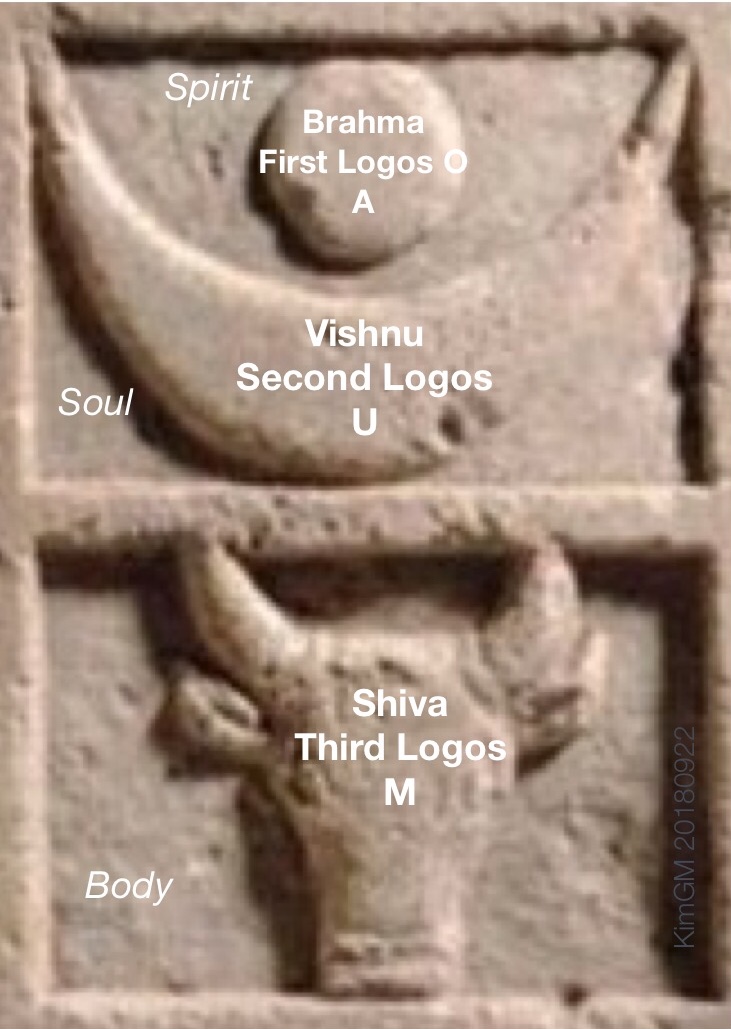

The Trident within various culture as symbol for the Third Logos:

Below I have taken the symbols on the left from a page calling themselves Scientific Research on “Hinduism Kamasutra”; they have many interesting views, although my conclusion differs. The symbology is the same as the grail.
 The symbol for Christ is interesting, A symbolizes the First Logos, the Father, the First Creator. Omega is the symbol for the Third Logos, the Holy Spirit, the third and future creator. P symbolizes the Second Logos, the Son and current creator.
The symbol for Christ is interesting, A symbolizes the First Logos, the Father, the First Creator. Omega is the symbol for the Third Logos, the Holy Spirit, the third and future creator. P symbolizes the Second Logos, the Son and current creator.
Brahma uses the Tilak of Shiva and Vishnu as he usually works through them. He may have a more circular Tilak, like the circle of the First Logos:

Krishna’s Tilak, the symbol on his forehead, is like the U in AUM, the symbol for the Second Logos.

Krishna is the incarnation of Vishnu in the Etheric world, so Vishnu have also the U Tilak, and Hanuman have too.
Krishna is the archetype of man, his body is Shiva, his soul is Vishnu and his spirit is Brahma, or in christian symbology, Christ has the Holy Spirit as body, the Son as soul, and the Father as spirit. Third Logos as body, Second Logos as soul and First Logos as spirit.
“The world rests as the lotus in the palm of my hand, the cosmos revolves around my finger like a discus. I blow the music of life through my conch and wield my mace to protect all creatures.” – Krishna Upanishad
See more on Krishna Krishna and the Holy Spirit and Krishna as Teacher of Love
ॐ is the whole reality
AUM is the whole world. It’s also said to be fourfold, A + U + M + stillness or without an element, the I AM. It’s the past, the present and the future, and the fourth transcends time.
Everything is Brahman, and Brahman is Atman (the Soul, the Self), and Atman is fourfold. It’s seeking the physical, seeking inner thought, seeking the causes and spiritual consciousness, and the fourth state is realizing oneness with the Self, the Eternal, the I AM.
The AUM means
- A is from Apti (obtaining, reaching) or from Adimatva (being first), Brahma, First Logos.
- U is from Utkarsa (exaltation) or from Ubhayatva (intermediateness), Vishnu, Second Logos.
- M is from Miti (erecting, constructing) or from Mi Minati or apīti (annihilation), Shiva, Third Logos.
- The fourth without an element, is without development, beyond the expanse of universe, the I AM.
Brahman exists in two forms, the material form and the immaterial form, the left and right side.
For the Sanskrit AUM we have for the trinity the “I” of the soul, the inner trinity of man.
“So wie man im Sanskrit das AUM für die Trinität hat, haben wir für das Innere des Menschen das Zeichen ICH.” (Rudolf Steiner, GA 93a, S. 30)
Brahma, the Father Logos is the creator of the past. Vishnu, the Son Logos is the creator of the present and Shiva, the Third Logos, is the creator of the future.
The old adepts expressed this briefly in the sacred word AUM.
1. A is the past that sounds loud and clear.
2. U is a dull vowel and represents the present. It has something of the clarity of the past and of the freedom of action of the present in it.
3. M is the indefiniteness of the future, to which every vowel or this or that action can still add something.
Rudolf Steiner 1-20-1907
AUM represents the Three Logoi, A the First Logos, the primal truth, U the Second Logos, the primal beauty, and M the Third Logos, the caring love.
“High spiritual beings whom we call masters stream down to us.
We should realize that it’s mainly they who guide us and are near to us in meditation.
We should also know that they walk on earth incarnated in a physical body.
… Every formula has the greatest effect in the original language. When an East Indian wants to give the highest expression to his reverence for the Godhead who reveals himself in three Logoi, he summarizes his feeling in three times three words that describe the activity of the three Logoi:
Primal-truth, primal-goodness, immeasurability, O Brahma
Primal-blissfulness, eternity, primal-beauty
Peace, blessing, undividedness
Aum, peace, peace, peace.
But the whole wealth of spiritual strength is only reproduced if the words are said in Sanskrit, the original language. Then one hears how even the air resonates:
Satyam jnanam anantam brahma
Anandarupam amritam bibharti
Shantam shivam avaitam
Om, Shantih, shantih, shantih.
The same applies to the Lord’s Prayer. Spoken in German, practically the only thing that’s effective is the underlying thought. The Latin Pater noster has a better effect, but the whole power and fullness only come to expression in the original Aramaic.”
From the Contents of Esoteric Classes, Berlin, 1-29-’07
 Standing gravity waves. and 2.
Standing gravity waves. and 2.

Where A is Atma, the Father, U is Buddhi, the Son, and M is Manas, the Holy Spirit, dharma.
Vishnu or Krishna is often shown with seven serpents above their heads, or Krishna dancing on the heads of serpents. It’s the seven bodies of man, the Seven Planetary Powers or Hierarchies as shown in the above diagram.
In Arjuna’s vision of Krishna we see the myriads of beings that are part of the full reality who Krishna really is. The picture illustrates the above diagram, the two sides of the bottom up U.
“AUM. One wards off bad influences when one says it in the right way; it connects man with the creating Godhead, the three Logoi.
The evil beings who want to tear men away from the Godhead can’t stand it.
AUM must be spoken with the awareness:
Primal Self from which everything came
Primal Self to which everything returns:
Primal Self that lives in me
Towards you I strive.
Peace-peace-peace = AUM.
A is atma, U is buddhi, M is the wisdom that directs the higher self to AUM.”
Rudolf Steiner, From the Contents of Esoteric Classes, Berlin, 1-29-1907.
AUM symbols from different traditions:
Lord Krishna says in the Bhagavad Gita:
Khrisna is the Word, AUM:
vedyam pavitram omkara
What is to be known, that I’m the purifier and the syllable OM.
In John’s Gospel Christ is the Word. This is Not a contradiction!
The Sound of AUM.
OM is a matrix of all sounds. These three sounds can be said without the tongue, all other sound can be said with these three sounds modified by the tongue.
Linguistically, all audible sounds are produced beginning at the root of the tongue and ending at the lips.
- A is the throat sound, symbolized through the lower lip, sitting on the lower jaw, not connected to the rest of our skeleton. It represent the powers from the spirit.
- The U sound starts at the root of the tongue, continuing until it ends in the lips. Symbolized through the line between the lips, the Word. The tongue is free of the skeleton, represents the soul between body and spirit, creating the reality by using the powers from body and spirit.
- M is the lip sound, symbolized through the upper lip, connected to the whole skeleton, representing the powers from the body.
![]()
See more on the Three Logoi here: The Logos Walks the Earth.


The Logos Walks the Earth
Posted by Kim Graae Munch in Esoterics, Hinduism, Indian esoteric, Kabbalah, Rosicrucianism, The Holy Grail on April 13, 2018
“The greatest untold story is the evolution of God.”
― G.I. Gurdjieff
I have here a text by Rudolf Steiner where he describe the three Logoi. I have added other quotes by Steiner and my own comments and diagrams.
The Three Logoi
There are three godly creative powers in the universe, the three Logoi: In Kabbalah they are called the Father, Mother and Son and in Christianity they are called Father, Son and Holy Spirit. It’s different terminology, but the underlying reality is the same.
The Father, Mother and Son symbology describes the creative type in relation to the creation and higher Logoi. The Mother is of course the Creator of humankind. The Father gives the idea, the Mother gives life and the Son gives form. The Trinity defines their role in the creation. See more on this aspect in Sophia – Creator of Humankind.
The First Logos creates out of nothing, creates Consciousness. The Second Logos creates new Life out of the existing and guides the living. The Third Logos combines the created, the building blocks, the clockwork of the microcosmos.
Rudolf Steiner has written this text on the three Logoi, but I must admit I didn’t understand the text before I had worked it out for myself. Its very short and he doesn’t give any details or examples, but I think it’s one of the deepest secrets he has hidden here for us to find. I think it’s about time it becomes known.
From Steiner’s Foundations of Esotericism, lecture 27:
Here we have three definitions of Beings who bring about, who underlie a planetary chain. They are called the three Logoi.
• The Third Logos produces by means of combining.
• When out of one substance something else having new life comes into being, this is brought forth by the Second Logos.
• Everywhere, however, where we have to do with a coming forth out of nothing, we have the First Logos.
This is why the First Logos is also often called the One who is immanent in things, the Second Logos the One who in the quiescent substance in things creates life out of the living, the Third Logos the One who combines everything existing, who puts the world together out of things.

These three Logoi always manifest in the world in and through one another.
…
In contemplating the world one continually sees the interaction of the three Logoi.
When a new creation starts, a new Æon, the First Logos sacrifices himself by falling down to a lower level. An archangel becomes an angel by adding an etheric body as a lower body.
The first logos is related to the second, as when, standing in front of the mirror image, we undertake to give our own life to the mirror image. The surrender of life is the original sacrifice in free action. That is the act of the first logo.
The second logos is exactly the same as the first logos, except that it was given its existence by a sacrifice. If one now studies the effect of the second logos, one finds that the essence of the second logos is that it radiates the essence of the first logos back to the first logos.
Thus, the second logos is a reflection of the first logos from which he received his own life, the life that emanated from the first logos.
The lecture series Foundations of Esotericism contains gold nuggets not found elsewhere. Not all versions of this text are good or contain all the pictures. This I think contains everything.
When Christ as First Logos sacrificed himself in the Saturn Æon when he took an astral body as the lowest body he became an archangel. On the old Sun he created Lucifer as a mirror image of himself, the Second Logos, and Lucifer became the first true being of the archangelic hierarchy.
The First Logos encircles the creation, the Second Logos enters the reality. It splits in two, a female part like Sophia or Eve and a masculine part like Anthropos or Adam, and like a potter the one hand forms the pot from outside and the other from within.
Now we have a binary in the Second Logos. The life and content of the Second Logos are twofold. The content is the same as the First Logos, but life is different than the First Logos.
The dash in the middle of the second circle means that in the Second Logos life and content are twofold, that they are divided. When it comes to content, image and mirror image are the same for both, but life is twofold. ~Steiner.
First, the First Logos is reflected once again, secondly, the reflection is reflected. This then gives the Third Logos as the reflection of the other two logoi. So it contains the Third logos:
• the mirror image of the First Logos
• the mirror image of what the First Logos in the Second Logos did, namely his life
• The mirror image of what the Second Logos reflects back to the First Logos.
Let us now imagine: The First Logos is mirrored in a. If the First Logos is the creative activity that strives outward, then its reflection in the Third Logos is just the reverse activity of the First Logos. In the First Logos, a is the highest spiritual world light: in the Third Logos, a is the ultimate spiritual darkness.
ln the Second Logos, b is the life that the Second Logos received from the First Logos. It is not the life that sacrifices itself, but the one that has been accepted. The life that sacrifices itself in the First Logos is love. The opposite of this in the Third Logos is the absolute desire, longing, striving for logos, b is therefore the absolute desire in the Third Logos.
In the Second Logos c is the mirror image of the First Logos, which reflects the Second Logos.
• What we have surrendered comes back as desire.
• The image itself, which we ourselves are.
b the absolute desire = Rajas
c the simple reflection of the first logo = sattva
Tamas, Rajas, Sattva are the three gunas, the three parts of the Third Logos. ~Steiner
First, a, b and c are present.
• If a alone exists, it is Tamas.
• When a – the spiritual darkness or Tamas – combines with b – rajas, the absolute desire – darkness combines with desire, and it is a striving for the first logos.
• When a and c – Tamas and Sattva – are combined, we have created the image of the first logo out of the darkness.
• Likewise, we can combine b with c. It can each occur individually and be combined with one of the others.
• All three combined are what the first logo itself is.
We have seven possible combinations of the three gunas:
So these are the seven different combinations of Gunas. Imagine these seven possible combinations as the next world-creative principle that can emerge from the three Gunas. These seven entities really exist. They are the so-called seven creative spirits before the Throne of God, according to the three Logoi the seven nearest creative powers:
Seven creative spirits, which Jacob Boehme calls the seven spring spirits in his aurora, spring from the third logos, for all three activities of the third logos can work together, or in pairs two or each: there are seven combinations that appear essential, and of which the one that encompasses all three activities is the third logo itself. Thus, the next level is reached world-creative beings. ~Steiner.
I have used a drawing of Steiner to show this information, the Alchemist Mountain. It’s a versatile diagram that can be used to show many aspects of man, gods and the universe. It corresponds to the seven lowest sephira in the Kabbalah Tree of Life. Here put together with the Seven Creative Spirits and the Æon’s:
These seven world-creative principles correspond to the seven planets but also to the Planetary development cycles, Æons, the incarnations our Earth goes through, but also the shorter development periods follow this sequence. See more later.
In the old Saturn æon the seed of the physical body and Atma was created. This is the Father. In the old Sun æon the seed of the etheric body and Buddhi was added. This is the Son. On the old Moon the seed of the astral body and Manas was added. This is the Holy Spirit.
The astral is the most flexible layer, most conscious, and therefore easier to transform. The etheric layers consciousness is not as flexible so it’s less easy to transform. And the physical layer is the least flexible and therefore most difficult to transform.
Atma need all three layers (abc) to develop before it can be developed, and the consciousness soul is the channel developed.
Development of the spiritual bodies:
ac • The Spirit Self or Manas is the result of the experiences of the physical body (a) transforming the karma of the astral (c).
bc • Life Spirit or Buddhi is our wisdom, the result of the transformation of our etheric body (b) our opinions by the speculative thinking of the astral body (c).
abc • Spirit Body or Atma is the result of the transformation of the physical (a) by the work of the Etheric (b) and the astral (c).

Through the work in the physical and the etheric we create the soul. Through the work in the physical and astral we create Manas, develop the higher I. Through the work in the Etheric and Astral we create Buddhi, wisdom. Through the work in a, b and c we create Atma, the resurrection body.

They are the foundation behind all creation. We know them most visibly through Osiris, Isis and Horus, but usually the Logoi are hidden under a veil of mystery.
In every creation a being is selected to become the coming Logos for that creation, being the archetype for the rest of the creation. Already from old Saturn was the creating Word of humanity selected and prepared for the role.
This creating downwards is shown in Kabbalah where the Sephirots, the Logoi, are created downward. When the creation develops and raises, the Logos follows its siblings up. The Logos is like a sun in the creation, in the hierarchy.

The Tree of Life
In Christianity the archangel names are titles for the Logos at a given hierarchy. Steiner compares the great archangels to the other members of the angelic hierarchy as the sun to a planet.
The Messenger of God, Archangel Gabriel, is the Logos of the Angels. The Face of God, Archangel Michael, is the Logos of the archangelic hierarchy. The archangelic hierarchy should not be confused with the great archangels.

The Gods walk the Earth
This describes the Logoi in the Earth development, and less the actual details, I have another text describing more detailed here: Esoteric Earth History.
The Three Logoi is known through many symbols, here we have a number of such:
Steiner mentions that Zarathustra is the Second Logos, one of the three main teachers of mankind. These high spiritual powers work on Earth:
High spiritual beings whom we call masters stream down to us.
We should realize that it’s mainly they who guide us and are near to us in meditation.
We should also know that they walk on earth incarnated in a physical body.
The Symbology and Meaning of AUM
Adam and Eve – Anthropos and Sophia
In Genesis we have Adam as the first creation by Sophia, the physical world. Eve is the second creation, in who Sophia emanates into. Adam is the First Logos and Eve is the Second Logos, and Cain is her masculine side entering the physical universe as Yaldabaoth where Eve takes care of the spiritual side.
Cain is the Son of God, the Second Logos, who are the archetype of humankind, who develop life on Earth from the smallest cells to the human body, and the spiritual bodies, walking the path just before we walk it.
Abel is the Son of Man, the Third Logos we know as Jesus, he is a reflection of Adam and Eve, the Second Logos.
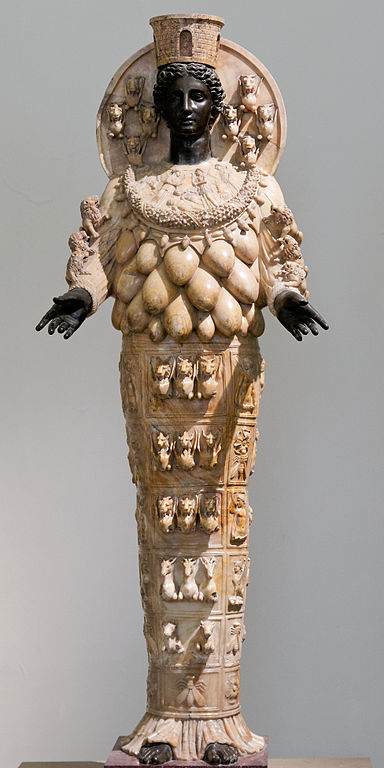
At the start of Earth Sophia was the etheric planet where all life was connected through tubes where prana feed all beings.
She took on the physical as outer body, that became more and more solid until she once became fully coated by physical materia.
The Second Logos developed all the physical life on Earth from one celled life until human life. The Second Logos was in form of the archetypal pair the only one incarnating around the end of Lemuria and the start of Atlantis.
The Earth and its life was fully covered in the physical stuff at the end of Dream Time, when Krishna died from mankind’s view, when the Dark Time, Kali Yuga, started. Sophia left the physical and raised to angel, Theosophia.
The First Logos was Zarathustra, Odin, Zeus, Noah, Elisha, and many more through whom Sophia worked.
Krishna teaches Arjuna, the Second Logos, to lead humanity on after the Dark Night, Kali Yuga, falls over the Earth. Krishna puts on paper the knowledge that people could see in the spiritual world, so it survived into the coming Dark Age. See Krishna and the Holy Spirit.
Arjuna learns that Krishna will not interact directly any longer in the human affairs, Krishna will in the future work through Arjuna. But even if Arjuna is one against all Krishna will make sure that he wins, through the wheel of fate, the Zodiac.

Krishna with the Wheel of Fate.
Christ Jesus
The First Logos is also known as the personality of Zarathustra, with the prime objective to develop the I, and preparing mankind to live in a purely physical world.
Jesus of Nazareth is a very highly developed individuality. In the thirtieth year of his life he gives up his own life to the descending Christ, the descending Logos. All this the Magi foresaw. The great sacrifice made by Jesus of Nazareth is that he gave up his ‘ I ’ to make way for the Second Logos. ~Steiner
With Jesus incarnated the Third Logos, the Son of Man, Abel, the one who stayed back. In the Son of Man is the creation descended a level deeper into the physical, by him the astral body is the fourth principle, where the I will be developed, where we had the I in the soul, in the intellectual soul, a purification of the etheric soul.
Steiner mentions that he as child he spoke a language only his mother spoke, who represents Sophia. It was dream language they spoke, the language spoken between the astral body and the higher I.
The following text also points to the Jesus being as the Holy Spirit, awaiting the time to incarnate:
The spirit that prevailed in the common origin of both souls and bodies is the father spirit; that is the “Father”.
The spirit that prevailed down below in the physical realm, whilst the spiritual went its separate ways up above, is the son spirit; that is the “Son”.
And the spirit that prevailed up above in the soul sphere until it was able to descend into the physical realm, that is the “Holy Spirit”.
From the notes of the lecture “The promised spirit of truth”, Cologne, 8 March 1907
The body of Jesus became one with the Earth, he didn’t leave the grave again, the Third Logos entered the earth.

When Christ left the Sun he left the highest member Atma behind so the highest body was the Buddhi, and attained the elemental body of type I as the lowest. He is the Archetype of the new humanity that will go through the human development on New Jupiter, also called New Jerusalem.
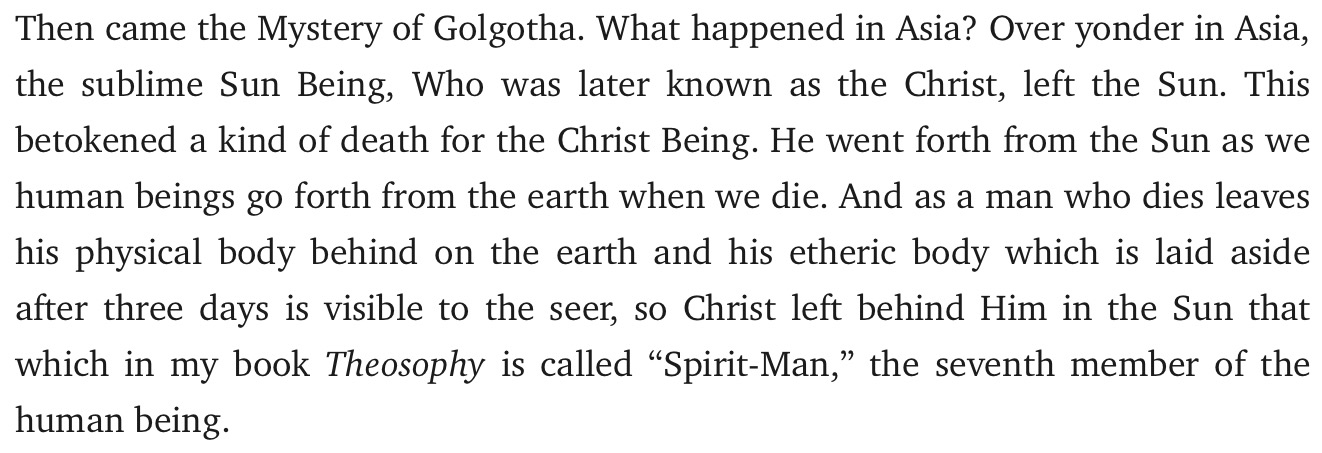
Here he receives the Buddhi:

And:

The soul of the First Logos entered Jesu Soul at thirteen and before the Baptism it leaves the soul again.
John the Baptist represented the old Adam Kadmon, he pointed on to the next. John was beheaded, separating body and head, splitting the upper and lower principles of the old Adam. After this he hovers above the disciples, as the spirit of the First Logos.
The incarnating Third Logos:

The Running Youth
When the running youth left Jesus, it was the First Logos who left. Jesus died and entered the death world, the astral world, as the Third Logos.
We see it again at the grave.
Zarathustra and Lazarus

The Zarathustra soul Steiner mentions is the First Logos and Lazarus the Second Logos:
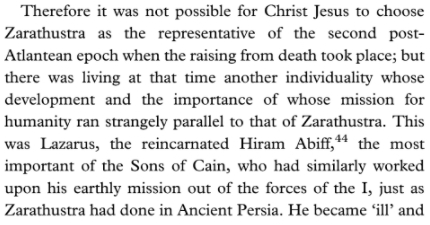
Here give Christ over to Lazarus John, the Second Logos, mentioning the relationship between Zarathustra and Lazarus.

The Second Logos is represented by John the Evangelist who leaves the cave, Earth, to become the teacher and leader of humankind, the Temple Builder, replacing the John the Baptist.

It’s interesting that the Second Logos, Lazarus, ascends from the grave and the Third Logos disappears into the grave, becomes one with the Earth.
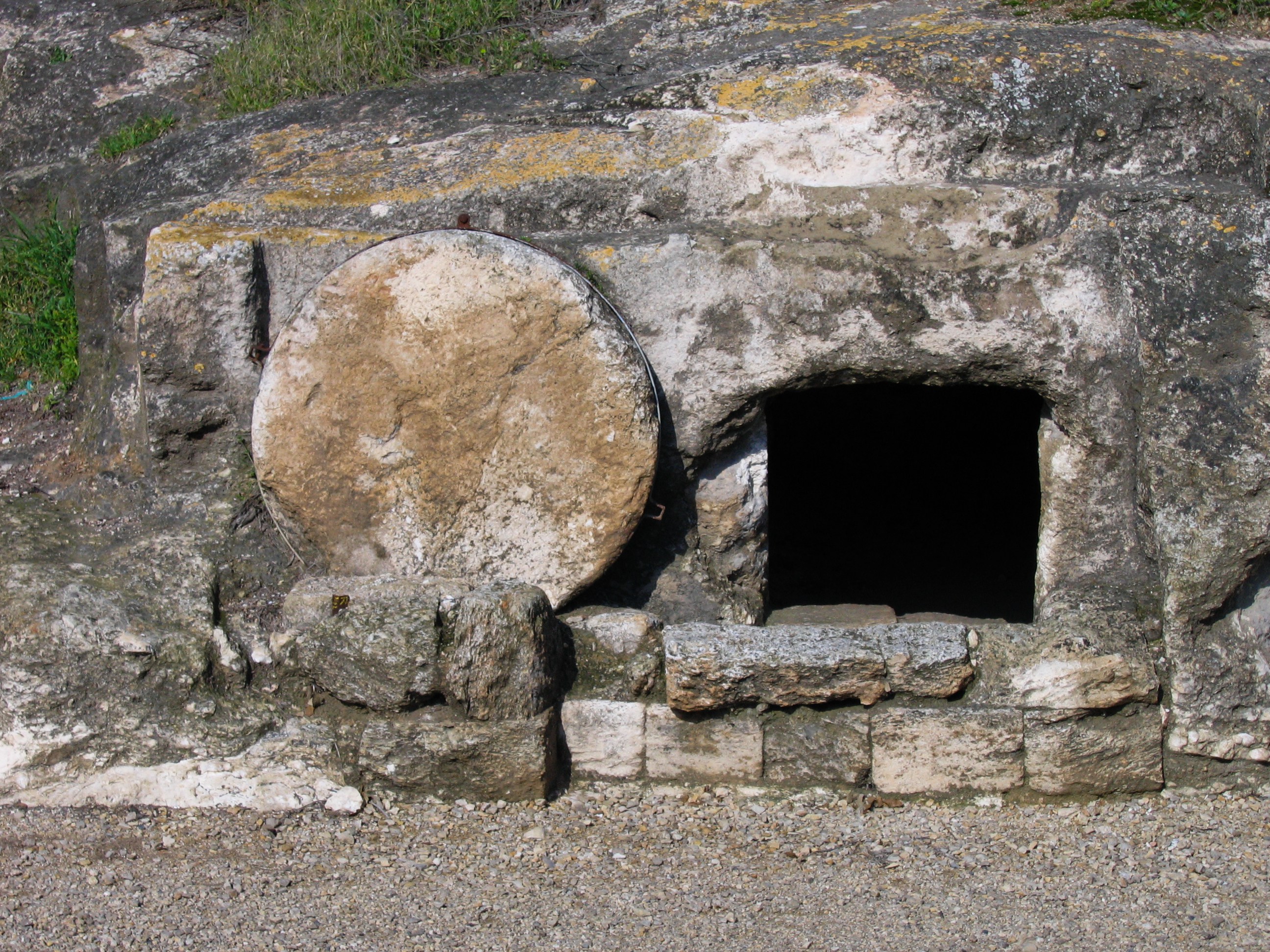
The Second Logos takes over, and he becomes the author of the Gospel of John and the Apocalypse of John:
“Under the Cross stood the mother of Jesus, Sophia.”
To this mother Jesus says:
“Woman, behold thy son.”
He himself had transferred the Sophia that lived within him to the Disciple John; he transformed him into a son of Sophia and said:
“Henceforth you should recognise the divine wisdom as
your mother and dedicate yourself to her alone.”
John had recorded this divine wisdom; Sophia is embodied in the Gospel of St. John.
Jesus had given him this wisdom, and he was authorized by Christ to transmit it to the world. ~Steiner
In 1879 Anthroposophia raised from Angel to Archangel, and as she was the Logos of the Angels, the Second Logos, she took the vacant seat of Michael.
A deeper view on the creative process of the Three Logoi can be found in Why are there so much pain on Earth?.

The Three Logoi

The history of the current Second Logos is a very long and interesting story, and I am working on it.

The Origin of Lucifer – Shiva
Posted by Kim Graae Munch in Esoterics, Hinduism, Indian esoteric, Rosicrucianism on May 3, 2016
Lucifer is one of the more mythic beings, clouded in mystery, but I read a beautiful description by Rudolf Steiner on the origin of Lucifer:
“We find the Sun still as a planet among the seven planets, we find Venus with Lucifer as her ruler [Christ is the ruler of Sun]; and these two, the Sun Spirit and the Venus Spirit – in other words Christ and Lucifer – appear at first sight like brothers. Only by straining to the utmost our powers of perception are we to mark out the difference between them.
……..
 “Lucifer, the ruler of Venus, appears in a form that is extraordinarily full of light … spiritual light. We have the feeling that all the glow and brilliance we can ever experience on Earth…is weak and dim in comparison to the majesty of Lucifer in the old Sun time. But then we notice, when we begin to perceive his intentions…that Lucifer is a being endowed in his very nature with infinite pride.
“Lucifer, the ruler of Venus, appears in a form that is extraordinarily full of light … spiritual light. We have the feeling that all the glow and brilliance we can ever experience on Earth…is weak and dim in comparison to the majesty of Lucifer in the old Sun time. But then we notice, when we begin to perceive his intentions…that Lucifer is a being endowed in his very nature with infinite pride.
……….
“Lucifer’s proud greatness, Lucifer’s pride in his majestic figure of light …”Unmanifest light,” light that does not shine outwardly, but has immense strong power in itself – that Lucifer has in full measure … The Christ figure in the time of old Sun – the Lord and ruler of the Sun planet – is a picture of utmost devotion, entire devotion to all that is around Him in the world. Whereas Lucifer looks as one who thinks only of himself – we are obliged to cloth it all in human words, notwithstanding the fact that they are quite inadequate – Christ appears as wholly given up, in devotion, to all that is around Him in the great world.”
……..
These [the starsigns of the Zodiac] were not then externally visible; but instead, twelve great Forms, twelve Beings were present who let their words ring forth from the depths of the darkness, … they were words that told of primeval times, of times that even then were in a remote and ancient past.
The twelve were twelve World-Initiators [Logoi]. Today we behold standing in the directions of these twelve World-Initiators the twelve Signs of the Zodiac, but from them resounds, for the soul that is open to the whole world, the original being of the Unspoken Word of Worlds, that could take form in the twelve Voices.
And whilst Lucifer alone — I must now begin to speak more in pictures; human words do not in the least suffice — whilst Lucifer had the impulse to let stream out upon all things the light that was present in him and therewith come to a knowledge of all things, the Christ on the other hand, gave Himself up to the Impression of this Word of the Worlds, received It in its fulness and entirety into Himself, so that this Christ Soul was now the Being that united in Himself all the great Secrets of the World that sounded into Him through the inexpressible Word.
Such is the contrast that presents itself, — the Christ Who receives the Word of the Worlds [AdamKadmon], and the proud Lucifer, the Spirit of Venus, who rejects the Word of the Worlds and wants to found and establish everything with his own light [outside Adam Kadmon].
(“Man in the Light of Theosophy, Philosophy, and Occultism”, Rudolf Steiner Press, 1964, lectures 8, 10)
This description is one of the more profound esoteric statements, it contains information that joins many other texts to a whole, and opens up for the understanding of the fall.
The above took place two æons back in time, a period called old Sun in esoteric parlance, see also Esoteric History of Man
Shiva as Lucifer
The previous text describes in reality Shiva, every place the name Lucifer is written there could as well have stood Shiva.
Steiner continues:
Every religion has to be referred back to a founder who through this religion made known to a group of people, in a manner suited to their capacity, some experience belonging to a particular stage of initiation.
You have for instance the religion which is not able to rise to the Christ, the Spirit of the Sun, but is peculiarly adapted to rise to the great and far-reaching soul that lived in the being who was many times incarnated as a Bodhisattva — a religion that looks up in worship to him who is the great Initiator, the great Inspirer, of the Buddha [Shiva, Lucifer].
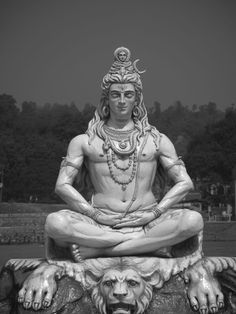
This illustrates nicely Lucifer’s posture as he sits between the Archangels
This religion is not able to ascend to a vision of how the Christ is the Sun Spirit and has descended to Earth.
It sees only as far as to the one who is sent as a messenger; it gathers together, as it were, for its content that which goes forth from the Sun and becomes a planetary spirit.
And we can well understand that Buddha is regarded as a planetary spirit.
Such a religion, that lifts men’s thoughts to the Spirit who guides the evolution of the Buddha, could only grasp a figure like the figure of Vishnu in the Indian Trimurti.
Moreover, since a religion of this kind has not yet come through to the knowledge of the universal victory of Christ over Lucifer, neither is it able to place the figure of Lucifer in such relation to the Christ as we can today.
To the followers of such a religion Lucifer seems to be standing beside the Christ as an independent figure, — His equal, unsubdued. We have seen how Lucifer is given the place of a kind of brother. This is what you have when Shiva confronts Vishnu [Christ]. Look into the religion of Shiva, study it carefully; and you will follow me when I say that the Shiva religion of India can be understood when one has knowledge of the Lucifer Being. For Shiva is in reality Lucifer in the form in which he is not yet overcome.
(“Man in the Light of Theosophy, Philosophy, and Occultism”, Rudolf Steiner Press, 1964, lectures 8, 10)
Here Shiva is Lucifer as he entered the Earth development, he represent the angelic hierarchy, as it was when our development started on Earth, and he represents our etheric body before we began working on it.
Shiva represents our situation after we left Paradise, the etheric world, and entered the physical world, he represent tedious work in blood, sweat and tears, our way down into the physical.
See also Shiva and the Origin of the Earth
Vishnu represent Christ, but yet not very visible on Earth, Shiva was the absolute power, longer could man, at that time, not reach up into the spiritual worlds. Vishnu or Christ incarnates in etheric form as Krishna. Krishna shows his superiority over Shiva through many symbols, including his victory over the demon bull.
Steiner writes this on the relation between Lucifer and Christ:
We learn how Christ already on the old Moon overcame Lucifer, and in the scene that is given us in the Gospels we have to see, as it were, a recurrence of the fact that Christ attained to victory over Lucifer.
On Earth Christ repels Lucifer from the outset. This is because on the Moon, when He was Himself less highly evolved — for Christ also undergoes evolution — He had repelled, through the uttermost devotion of His Being to Highest Powers, all the attacks of Lucifer which at that time still meant something to Him.
Already on old Moon Lucifer approached Christ. On Earth he was no longer dangerous to Him: on Earth Christ repels Lucifer at once. On the Moon, however, Christ had to exert all the forces at His disposal in order to repel Lucifer. This is then the added experience that comes to us when we cast back the gaze of higher consciousness into the remote time of Moon.
(“Man in the Light of Theosophy, Philosophy, and Occultism”, Rudolf Steiner Press, 1964, lectures 8, 10)
The fight between Lucifer and Christ, on the Old Moon, is described in the story about the Fight between Vishnu and Shiva. It’s of course described differently from the Vishnu and Shiva tradition. Here Vishnu only barely win over Shiva, as described with Christ and Lucifer.
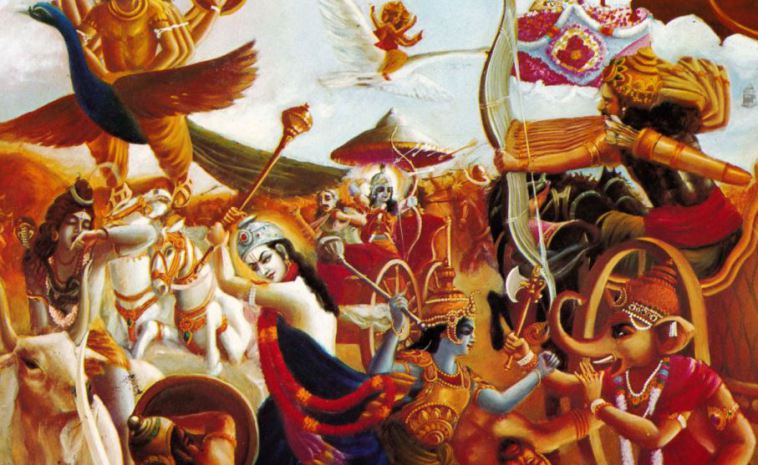
On Earth the fight between Christ and Lucifer is described in the fight between Krishna and Shiva, where Krishna win without any problems.
Krishna, Radha and the Holy Spirit
Posted by Kim Graae Munch in Esoterics, Hinduism, Indian esoteric, Love, Rosicrucianism, The Holy Grail, The Three Logoi on December 27, 2015
Krishna and the Flute
A dear friend of mine made me aware of Krishna in modern India, and I am impressed by the life and devotion.
I got the inspiration that we in the western world also know Krishna, he is an incarnation of the Indian Trinity and the soul is an aspect of Vishnu, the body an aspect of Shiva and the Spirit an aspect of Brahma. In Christ we have the body as the Holy Spirit, the soul as the Son and the spirit as the Father.
And when thinking about it, I realized that I should have known it beforehand, as, in my understanding, Jesus became the Holy Spirit, the Holy Grail Christ filled and from where he ascended.
The disciples ask Jesus if he needs to die and he answers that if he don’t die, the Comforter wouldn’t appear, the Holy Spirit wouldn’t appear.
When Jesus died, he entered the death world, the astral world, and the astral world is where the Holy Spirit works the clockwork of the Earth. Jesus is the top of an Iceberg, physically he is a man, but spiritually a god.
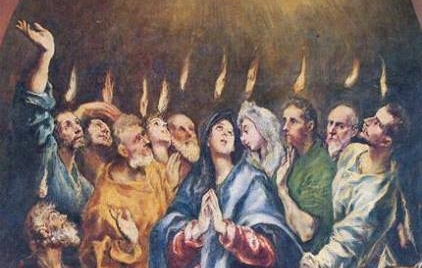
Krishna and Radha
The Holy Spirit is known as the Wind in the Willows and Krishna is known through his flute, the melody behind life, the consciousness behind the physical world, and if we listen carefully, are conscious about the details in our life, we can hear the melody, see the trace of small miracles everywhere. This flute stays with Radha when he descends into the physical world, she represent the feminine side of the Third Logos, the Holy Spirit, where Krishna represent the Second Logos, the Word.
Krishna, is the teacher of humankind, although we often believe he’s a trickster, as we don’t understand the path our life takes.
Steiner compares the teaching of Arjuna by Krishna with the teachings of sct. Paul, and that is the same being, but with added wisdom from the Jewish path upto and including Golgotha and the Holy Spirit, but also more physical than the etheric wisdom of Krishna. See The Bhagavad Gita and the Epistles of Paul. Lecture 5 of 5.
When Saul have the Christ vision he gets blinded by the light of Krishna, it enters into him, he now have the wisdom of Krishna, when he can see again he sees with the understanding of Christ and with the guidance of the Holy Spirit, Saulus became Paulus.
A dialog from Gita Govinda about Krishna’s real purpose of being born, to establish dharma, for the soul to become an inner reality of the human being where it earlier was an outer being, hovering above. This became a reality at Golgotha, now the soul was within man and through conscience, intelligence and inspirations we can feel some of dharmas work. First at the return of Christ in the coming years will we see karma become lighter, first now are people beginning to understand love. Radha and Krishna is the teachers of love.
Radha: But some day you will leave Vrindavan?
Krishna: Yes, I have to. I will have to move towards my real purpose of being born.
Radha: What is your real purpose of being born?
Krishna: To establish `dharma’ so that right can triumph over wrong.
Radha: What was the purpose of your time spent in Vrindavan? Especially with me.
Krishna: To teach people the weapon with which they can triumph good over evil.
Radha: Which is?
Krishna: Love. Only Love can conquer everything. When you fight with Love, no one gets hurt; not even the ones you’re fighting with.
Radha: So will all your wars be fought with Love?
Krishna: I will try my best to do that. If it doesn’t work, then I may have to use other means so good can triumph over evil, but personally, I won’t lift any other weapon apart from Love and counseling; but I may encourage others to do so if all else fails.
…
Radha: (Radha is surprised) What will you “take” from them?
Krishna: In return for their partnerships, I will “take” from them, their most painful & difficult karma.
Radha: What kind of painful & difficult karma?
Krishna: Pain, sadness, loneliness, grief, poverty… anything. And I’ll replace it with love.
Krishna: I will take brunt of their most difficult karma, so they can lead a good life. I will make their life easier.
From Journey2Light
That is what is meant when Christ Jesus dies to take our sin on his shoulders.
Krishna and Radha as Teacher’s of Love
Posted by Kim Graae Munch in Esoterics, Hinduism, Indian esoteric, Love, Rosicrucianism, The Three Logoi on December 27, 2015
A dear friend of mine made me aware of Krishna in modern India, and I am impressed by the life and devotion.
Krishna and Radha
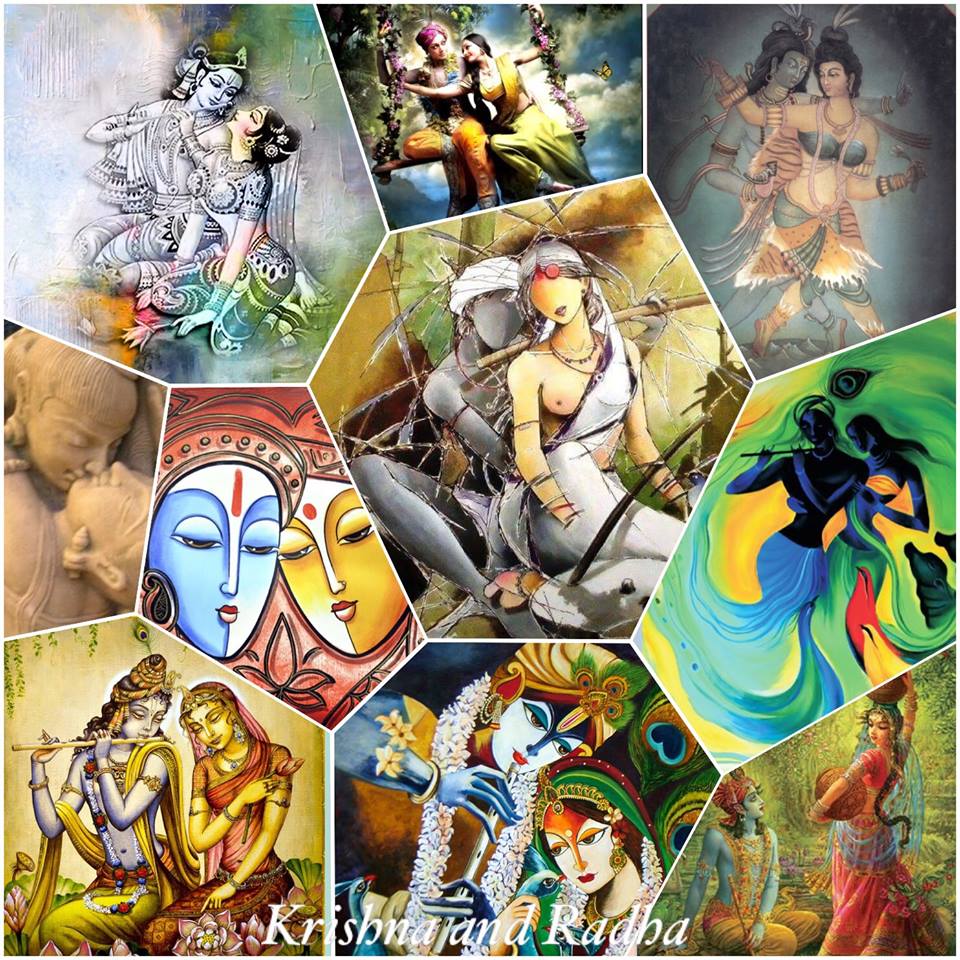
One of the central themes is the love between Krishna and Radha.
The love affair starts when the astral body Radha joins with the etheric body Krishna, and it ends when Krishna leaves Radha to descend to earth to join with the physical body, the etheric separates from the astral, causing Radha’s death. This is related to the myth about Orpheus and Eurydice/Eurydike.
This is both a cosmic event, that happened when dreamtime ended, but it happens also each day, when we go through the small death.
When we wake, and the etherbody joins with the astral body, the love affair starts.
When we sleep, and the astral body separates from the etheric body, only connected to the etheric body through a silver cord, she dies, she become unconscious and enter sleep.
The initiation, the Rosicrucian Chümical wedding, the Union of the masculine and feminine, is the marriage between Krishna and Radha, thereafter they will not separate again.
Krishna and Radha as the Teachers of Love
A dialog from Gita Govinda is telling that each person has two parts, an astral part, Radha and an etheric part, Krishna, that they are searching the other part. Love is the power that make them find each other, and it’s their task is to learn humankind to love, as it’s the only way to find the other part.
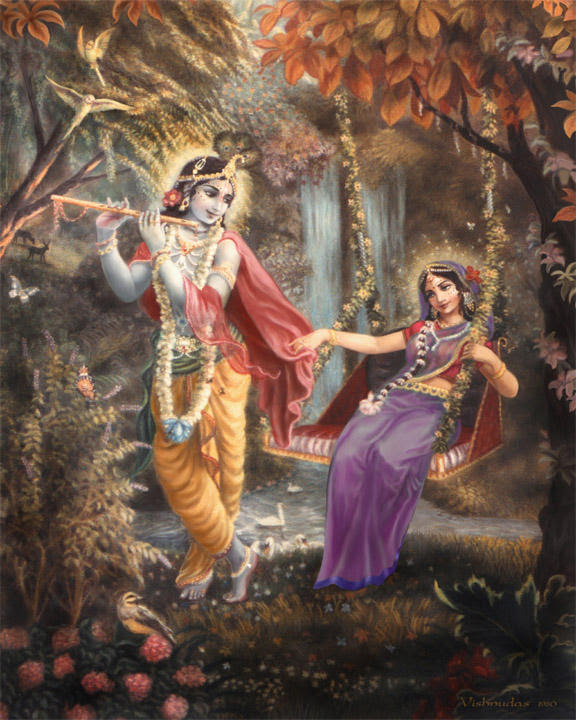
Krishna: “When two souls are united, the difference of the other or second vanishes; so if we are but one soul, then why do you wish for marriage?”
Radha: “Right now I see no difference between me and the others; everyone thinks you belong to them; so how does that set me apart?”
Krishna: “There are hundred Gopis who search for me every day; who wish to be with me; but you’re the only one I search for, and wish to be with; does that not set you apart?”
Radha: “No, it does not; because you seem eager to accept the Love of every Gopi, not just mine; I have no proof I’m apart from others.”
Krishna: “I am eager to accept the Love of not just every Gopi, but every Gwala, and every other creature that wants to shower me with love.
Can’t you see Radha, that is the purpose why I am here; to fill every living soul with Love; to teach every creature to Love.
I cannot reject any Love that is offered to me; Love requires both strength and courage. It requires courage to profess Love; Love that is professed and accepted gives strength.
Courage and strength will help every living being to endure the highs and lows of life. By encouraging living beings to profess their love to me, I gift them courage; by accepting their love, I gift them strength
If every Radha has to find her Krishna, and every Krishna His Radha, they have to start somewhere, with someone.
I am that Beginning; by learning to love me, and feeling that they are loved in return, I take every Gopi and Gwala as every other creature one step forward towards their own Krishnas and Radhas.
If I were to reject their Love, then they would never have the courage to ever profess Love to anyone again, then how would they ever find and unite, with their own Krishnas and Radhas?”
Radha: “Even if I were to accept what you are saying Krishna, how does it prevent you from marrying me, if it is important to me? What is it that prevents you from marrying me?
Krishna: “Because, we are but one soul; marriage is to unite two souls; we are one soul split into two; we are simply part of the other.”
Radha: “If we are but one soul split into two, then Krishna, then you should not have a problem offering me marriage.”
Krishna: “Now you are speaking from Ego; Ego divides; you are seeing us as two separate entities; speak from Love and you’ll see we were one.”
Krishna and Romanticism
At the start of the human development we were animals with a soul seed, we acted as animals and we procreated as animals, mindless love, we should learn to love as individuals, face to face, and it didn’t happen by chance, books were written to teach mankind how to do it, into the least detail, like Kama Sutra, and Krishna and Radha taught man how to love with the heart.
A sahajiya poem of Vidyāpati is rendered into English by David R. Kinsley thus:
As I near the bed,
He smiles and gazes.
Flower-arrows fill the world.
The sport of love,
Its glow and luxuries
Are indescribable, O friend,
And when I yield myself,
His joy is endless.
Freeing my skirt,
He snatches at my garland.
My downcast mind
Is freed of frontiers,
Though my life is held
In the net of his love.
He drinks my lips.
With heart so thrilled,
He take my clothes away.
I lose my body
At his touch
And long to check
But grant his love.
Says Vidyāpati:
Sweet as honey
Is the talk of a girl in love.
 On Facebook: Krishna and Radha
On Facebook: Krishna and Radha
Some Results of Initiation
Posted by Kim Graae Munch in Buddhism, Esoterics, Indian esoteric, Rosicrucianism on May 19, 2015
The following text extracts is from “Some Results of Initiation” from the book “Knowledge of the Higher Worlds and its Attainment” by Rudolf Steiner.
It’s one of the best descriptions on the subject, on what each chakra is and does in us at our development, and how our life influences the chakras.
This is not an incentive to use some of the methods that are elsewhere in the book, most readers of this have no need for these methods, fate are giving us what we need, only one method may be of interest to all, and that is contemplation, but most will intuitively use it, as a ‘remembrance’ from earlier lives.
Lotus Flowers – Chakras
The further the student advances in his inner development, the greater will be the organic differentiation introduced into his astral body. The latter is confused and undifferentiated in the case of a person of undeveloped inner life; yet the clairvoyant can perceive even the unorganized astral body as a figure standing out distinctly from its environment. It extends from the centre of the head to the middle of the physical body, and appears like an independent body possessing certain organs.
These organs, now to be considered, are apparent to the clairvoyant near the following parts of the physical body:
- the first between the eyes;
- the second near the larynx;
- the third in the region of the heart;
- the fourth in the so-called pit of the stomach;
- the fifth and sixth are situated in the abdomen.
These organs are technically known as wheels, chakrams or lotus flowers. They are so called on account of their likeness to wheels or flowers, but of course it should be clearly understood that such an expression is not to be applied more literally than when the lungs are called wings. Just as there is no question of wings in the case of lungs, so, too, in the case of the lotus flowers, the expression must be taken as a figurative comparison.
 In undeveloped persons these lotus flowers are dark in colour, motionless and inert. In the clairvoyant, however, they are luminous, mobile, and of variegated colour. Something of this kind applies to the medium, though in a different way; but this question need not here be pursued.
In undeveloped persons these lotus flowers are dark in colour, motionless and inert. In the clairvoyant, however, they are luminous, mobile, and of variegated colour. Something of this kind applies to the medium, though in a different way; but this question need not here be pursued.
Now when the student begins his exercises, the lotus flowers become brighter; later on they begin to revolve. When this occurs, clairvoyance begins. For these flowers are the sense organs of the soul, and their revolutions express the fact that the clairvoyant perceives supersensibly. No one can perceive the supersensible until he has developed his astral senses in this way.
Thanks to the spiritual organ situated in the vicinity of the larynx, it becomes possible to survey clairvoyantly the thoughts and mentality of other beings, and to obtain a deeper insight into the true laws of natural phenomena.
The organ situated near the heart permits of clairvoyant knowledge of the sentiments and disposition of other souls. When developed, this organ also makes it possible to observe certain deeper forces in animals and plants.
By means of the organ in the so-called pit of the stomach, knowledge is acquired of the talents and capacities of souls; by its means, too, the part played by animals, plants, stones, metals, atmospheric phenomena and so on in the household of Nature, becomes apparent.
The organ in the vicinity of the larynx has sixteen petals or spokes; the one in the region of the heart twelve, and the one in the pit of the stomach ten.
Thanks to the spiritual organ situated in the vicinity of the larynx, it becomes possible to survey clairvoyantly the thoughts and mentality of other beings, and to obtain a deeper insight into the true laws of natural phenomena.
The organ situated near the heart permits of clairvoyant knowledge of the sentiments and disposition of other souls. When developed, this organ also makes it possible to observe certain deeper forces in animals and plants.
By means of the organ in the so-called pit of the stomach, knowledge is acquired of the talents and capacities of souls; by its means, too, the part played by animals, plants, stones, metals, atmospheric phenomena and so on in the household of Nature, becomes apparent.
The organ in the vicinity of the larynx has sixteen petals or spokes; the one in the region of the heart twelve, and the one in the pit of the stomach ten.
Now certain activities of the soul are connected with the development of these organs, and anyone devoting himself to them in a certain definite way, contributes something to the development of the corresponding organs.
The Sixteen Petalled Lotus – The Throat Chakra

The 16-petalled Lotus
In the 16-petalled lotus, eight of its sixteen petals were developed during an earlier stage of human evolution, in a remote past. Man himself contributed nothing to this development; he received them as a gift from nature, at a time when his consciousness was in a dull, dreamy condition.
At that stage of human evolution, they were in active use, but the manner of their activity was only compatible with that dull state of consciousness. As consciousness became clearer and brighter, the petals became obscured and ceased their activity.
Man himself can now develop the remaining eight petals by conscious exercises, and thereby the whole lotus flower becomes luminous and mobile. The acquisition of certain faculties depends on the development of each one of the sixteen petals.
Yet, as already shown, only eight can be consciously developed; the remainder then appear of their own accord.
The development proceeds in the following manner. The student must first apply himself with care and attention to certain functions of the soul, hitherto exercised by him in a careless and inattentive manner. There are eight such functions:
– The first is the way in which ideas and conceptions are acquired. In this respect people usually allow themselves to be led by chance alone. They see or hear one thing or another and form their ideas accordingly. While this is the case, the sixteen petals of the lotus flower remain ineffective. It is only when the student begins to take his self-education in hand, in this respect, that the petals become effective. His ideas and conceptions must be guarded; each single idea should acquire significance for him; he should see in it a definite message instructing him concerning the things of the outer world, and he should derive no satisfaction from ideas devoid of such significance. He must govern his mental life so that it becomes a true mirror of the outer world, and direct his effort to the exclusion of incorrect ideas from his soul.
– The second of these functions is concerned with the control of resolutions. The student must not resolve upon even the most trifling act, without well-founded and thorough consideration. Thoughtless and meaningless actions should be foreign to his nature. He should have well-considered grounds for everything he does, and abstain from everything for which no significant motive is forthcoming.
– The third function concerns speech. The student should utter no word that is devoid of sense and meaning; all talking for the sake of talking draws him away from his path. He must avoid the usual kind of conversation, with its promiscuous discussion of indiscriminately varied topics. This does not imply his preclusion from intercourse with his fellows. It is precisely in such intercourse that his conversation should develop to significance. He is ready to converse with everyone, but he does so thoughtfully and with thorough deliberation. He never speaks without grounds for what he says. He seeks to use neither too many nor too few words.
– The fourth is the regulation of outward action. The student tries to adjust his actions in such a way that they harmonize with the actions of his fellow-men and with the events in his environment. He refrains from actions which are disturbing to others and antagonistic to his surroundings. He seeks to adjust his actions so that they combine harmoniously with his surroundings, with his position in life, etc. When an external motive causes him to act, he considers how he can best respond. When the impulse proceeds from himself he weighs with minute care the effects of his activity.
– The fifth function includes the management of the whole of life. The student endeavours to live in conformity with both Nature and spirit. Never over-hasty, he is also never indolent. Excessive activity and laziness are equally alien to him. He looks upon life as a means for work and disposes it accordingly. He regulates his habits, the care of his health, etc., in such a way that a harmonious whole is the outcome.
– The sixth is concerned with human endeavour. The student tests his capacities and proficiency, and conducts himself in the light of such self-knowledge, He attempts nothing that is beyond his powers, but seeks to omit nothing that is within their scope. On the other hand he sets before himself aims that coincide with the ideals and the great duties of a human being. He does not mechanically regard himself as a wheel in the vast machinery of mankind, but seeks to comprehend the tasks of his life, and to look out beyond the limit of the daily and trivial. He endeavours to fulfil his obligations ever better and more perfectly.
– The seventh deals with the effort to learn as much from life as possible. Nothing passes before the student without giving him occasion to accumulate experience which is of value to him for life. If he has performed anything wrongly or imperfectly, he lets this be an incentive for repeating the performance later on, but this time rightly and perfectly. When others act, he observes them with the same end in view. He tries to gather a rich store of experience, and ever to turn to it for counsel; nor indeed will he ever do anything without looking back on experiences from which he can derive help in his decisions and affairs.
– Finally, the eighth is that the student must, from time to time, glance introspectively into himself, sink back into himself, take himself carefully to task, form and test the fundamental principles of his life, run over, in his thoughts, the sum total of his knowledge, weigh his duties, reflect upon the content and aim of life and so on.
The better the student’s thoughts and speech harmonize with the processes in the outer world, the more quickly will he develop this faculty. Whoever thinks and speaks what is contrary to truth destroys something in the bud of his 16-petalled lotus. Truthfulness, uprightness and honesty are in this connection creative forces, while mendacity, deceitfulness and dishonesty are destructive forces.
The student must realize, however, that actual deeds are needed, and not merely ‘good intentions’. If I think or say anything that does not conform with reality, I kill something in my spiritual organs, even though I believe my intentions to be ever so good. It is here as with the child which needs must burn itself when it falls into the fire, even though it did so out of ignorance.
The regulation of the above activities of the soul in the manner described, causes the 16-petalled lotus to ray forth in glorious hues, and imparts to it a definite movement. Yet it must be noted that the faculty of clairvoyance cannot make its appearance before a definite degree of development has been attained. It cannot appear so long as it is irksome for the student to regulate his life in this manner. He is still unfit, so long as the activities described above are a matter of special pre-occupation for him. The first traces of clairvoyance only appear when he has reached the point of being able to live in the specified way, as a person habitually lives. These things must then no longer be irksome, but must have become a matter of course. There must be no need for him to be continually watching himself, and urging himself on to live in this way. It must all become a matter of habit.
Now this lotus flower may be made to develop in another way by following certain other instructions. But all such methods are rejected by true Spiritual Science, for they lead to the destruction of physical health and to moral ruin. They are easier to follow than those here described. The latter, though protracted and irksome, lead to the true goal and cannot but strengthen morally.
The distorted development of a lotus flower results not only in illusions and fantastic conceptions, should a certain degree of clairvoyance ensue, but also in errors and instability in ordinary life. Such a development may be the cause of timidity, envy, vanity, haughtiness, wilfulness and so on in a person who hitherto was free from these defects. It has already been explained that eight of the sixteen petals of this lotus flower were developed in a remote past, and that these will reappear of themselves, in the course of esoteric development.
Faulty training may easily result in the reappearance of the earlier petals alone, while the new petals remain stunted. This will ensue especially if too little logical, rational thinking is introduced into the instruction. It is of supreme importance that the student should be a rational and clear-thinking person, and of further importance that he should practice the greatest clarity of speech. People who begin to have some presentiment of supersensible things, are apt to wax talkative on this subject, thereby retarding their normal development. The less one talks about these matters the better. No one should speak about them until he has achieved a certain degree of clarity.
On premature judgment
Suppose I hear a piece of news and thereupon immediately form an opinion. Shortly afterwards I receive some further news which does not harmonize with the previous information. I am thereby obliged to reverse my previous judgment. The result is an unfavorable influence upon my 16-petalled lotus. Quite the contrary would have been the case had I, in the first place, suspended my judgment, and remained silent both inwardly in thought and outwardly in word, concerning the whole affair, until I had acquired reliable grounds for forming my judgment.
Caution in the formation and pronouncement of judgments becomes, by degrees, the special characteristic of the student. On the other hand his receptivity for impressions and experiences increases; he lets them pass over him silently, so as to collect and have the largest possible number of facts at his disposal, when the time comes to form his opinions. Bluish-red and reddish-pink shades colour the lotus flower as the result of such circumspection, whereas, in the opposite case, dark red and orange shades appear.
See also Buddhas Eightfold Path: The Eightfold Path
The Twelve Petalled Lotus – Heart Chakra

The 12-petalled Lotus
The 12-petalled lotus situated in the region of the heart, is developed in a similar way. Half its petals, too, were already existent and in active use, in a remote stage of human evolution. Thus these six petals need not now be especially developed in esoteric training; they appear of themselves, and begin to revolve when the student sets to work on the other six. Here again he learns to promote this development by consciously controlling and directing certain inner activities in a special way.
It must be clearly understood that the perceptions of each single spiritual organ bear a different character. The 12- and 16-petalled lotus flowers transmit quite different perceptions. The latter perceives forms. The thoughts and mentality of other beings and the laws governing natural phenomena become manifest, through the 16-petalled lotus, as figures, not rigid motionless figures, but mobile forms filled with life. The clairvoyant in whom this sense is developed, can distinguish, for every mode of thought and for every law of Nature, a form bearing their impression. A revengeful thought, for example, assumes an arrow-like, pronged form, while a kindly thought is often formed like an opening flower, and so on. Clear-cut, significant thoughts are regular and symmetrical in form, while confused thoughts have wavy outlines. Quite different perceptions are received through the 12-petalled lotus. These perceptions may be in a sense likened to warmth and cold, as applied to the soul. A clairvoyant equipped with this faculty feels this warmth and cold streaming out from the forms discerned by the 16-petalled lotus.
– The 12-petalled lotus, when developed, reveals to the clairvoyant a deep understanding of the processes of Nature. From every manifestation of growth and development there issue rays of soul-warmth, while everything that is encompassed by decay, destruction, ruin, presents an impression of cold.
The development of this sense may be furthered in the following manner:
To begin with, the student applies himself to regulating his sequence of thought (control of thought). Just as the 16-petalled lotus is developed by cultivating thoughts that conform with truth and are significant, so, too, the 12-petalled lotus is developed by inwardly controlling the trains of thought. Thoughts that dart to and fro like will-o’-the-wisps, and follow each other in no logical or rational sequence, but merely by pure chance, destroy its form. The latter is developed to ever-increasing perfection, the closer thought is made to follow upon thought, and the more strictly everything of illogical nature is avoided. If the student hears illogical thoughts, he immediately lets the right thoughts pass through his mind. He should not, however, withdraw in a loveless way from what is perhaps an illogical environment, in order to further his own development. Neither should he feel himself impelled to correct all the illogical thoughts expressed around him. He should rather co-ordinate silently the thoughts as they pour in upon him, in a way conforming with logic and sense, and himself endeavour, in every case, to retain this same method in his own thinking.
– An equal supervision in his actions forms the second requirement(control of actions). All inconstancy, all disharmony of action conduces to the destruction of the lotus flower here in question. When the student performs some action, he must see to it that his succeeding action follows in logical sequence, for if he acts from day to day with variable intent, he will never develop the faculty here considered.
– The third requirement is the cultivation of endurance.(perseverance). The student is impervious to all influences which would divert him from the goal he has set himself, so long as he can regard it as the right goal. For him, obstacles contain a challenge to surmount them, but are never a reason for restraining his progress.
– The fourth requirement is forbearance (tolerance) towards persons, creatures and also circumstances. The student suppresses all superfluous criticism of everything that is imperfect, evil and bad, and seeks rather to understand everything that comes under his notice. Even as the sun does not withdraw its light from the bad and the evil, so he, too, does not refuse them an intelligent sympathy. Should some trouble befall him, he does not proceed to condemn and criticize, but accepts what necessity has brought him, and endeavours to the best of his ability, to give the matter a turn for the best. He does not consider the opinions of others merely from his own standpoint, but seeks to put himself into the other’s position.
– The fifth requirement is impartiality towards everything that life brings. In this connection we speak of faith and trust. The student encounters every human being and every creature with this trust, and lets it inspire his every action. Upon hearing some information, he never says to himself: ‘I don’t believe it; it contradicts my present opinions.’ He is far rather ready to test and rectify his views and opinions. He ever remains receptive for everything that confronts him, and he trusts in the effectiveness of his undertakings. Timidity and scepticism are banished from his being. He harbours a faith in the power of his intentions. A hundred failures cannot rob him of his faith. This is the ‘faith which can move mountains’.
– The sixth requirement is the cultivation of a certain inner balance (equanimity). The student endeavours to retain his composure in the face of joy and sorrow, and discards the tendency to fluctuate between the seventh heaven of joy and the depths of despair. Misfortune and danger, fortune and advancement alike find him ready armed.
The reader will recognize in the qualities here described, the ‘six attributes’, which the candidate for Initiation strives to acquire. The intention has been to show their connection with the spiritual organ known as the 12-petalled lotus flower. As before, special instructions can be given to bring this lotus flower to fruition, but here again, the perfect symmetry of its form depends on the development of the qualities mentioned, the neglect of which results in this organ being formed to a caricature of its proper shape. In this case, should a certain clairvoyance be attained, the qualities in question may take an evil instead of a good direction. A person may become intolerant, timid or contentious towards his environment; may, for instance, acquire some feeling for the sentiments of others, and for this reason shun them or hate them. This may even reach the point that, by reason of the inner coldness overwhelming him, he is unable to listen to repugnant opinions, or he may behave in an objectionable manner.
The Ten Petalled Lotus – The Solar Plexus Chakra

The 10-petalled Lotus
An inner training of a particularly intimate character is necessary for the development of the l0-petalled lotus flower, for it is now a question of learning consciously to control and dominate the sense-impressions themselves. This is of particular importance in the initial stages of clairvoyance, for it is only by this means that a source of countless illusions and fancies is avoided. People, as a rule, do not realize by what factors their sudden ideas and memories are dominated, and how they are produced.
Consider the following case. Someone is travelling by railway; his mind is busy with one thought; suddenly his thought diverges; he recollects an experience that befell him years ago, and interweaves it with his present thought. He did not notice that in looking through the window, he had caught sight of a person who resembled another intimately connected with the recollected experience. He remains conscious, not of what he saw, but of the effect it produced, and so believes that it all came to him ‘of its own accord’. Now much in life occurs in such a way! How great is the part played in our life by things we hear and learn, without our consciously realizing the connection! Someone, for instance, cannot bear a certain colour, but does not realize that this is due to the fact that the school-teacher who used to worry him many years ago, wore a coat of that colour. Innumerable illusions are based upon such associations.
Many things leave their mark upon the soul, while remaining outside the pale of consciousness. The following may occur. Someone reads in the paper about the death of a well-known person, and forthwith claims to have had a ‘presentiment’ of it ‘yesterday’, although he neither heard nor saw anything that might have given rise to such a thought. And indeed it is quite true that the thought occurred to him ‘yesterday’, as though of its own accord, that this particular person would die; only one thing escaped his attention: two or three hours before this thought occurred to him yesterday, he went to visit an acquaintance; a newspaper lay on the table; he did not actually read it, but his eyes unconsciously fell on the announcement of the dangerous illness of the person in question. He remained unconscious of the impression he received, and yet this impression resulted in his ‘presentiment’.
Reflection upon these matters will show how great a source of illusion and fantasy is contained in such associations. It is just this source which must be dammed up by all who seek to develop their l0-petalled lotus flower. Deeply hidden characteristics in other souls can he perceived by this organ, but their truth depends on the attainment of immunity from the above-mentioned illusions. For this purpose it is necessary that the student should control and dominate everything that seeks to influence him from outside. He should reach the point of really receiving no impressions beyond those he wishes to receive. This can only be achieved by the development of a powerful inner life; by an effort of the will he only allows such things to impress him to which his attention is directed, and he actually evades all impressions to which he does not voluntarily respond. If he sees something, it is because he wills to see it. And if he does not voluntarily take notice of something, it is actually non-existent for him. The greater the energy and inner activity devoted to this work, the more extensively will this faculty be attained.
– The student must avoid all vacuous gazing and mechanical listening. For him only those things exist to which he turns his eye or his ear. He must practise the power of hearing nothing, even in the greatest disturbance, if he does not will to hear; and he must make his eyes unimpressionable to things of which he does not particularly take notice. He must be shielded as by an inner armour against all unconscious impressions.
– In this connection, the student must devote special care to his thought-life. He singles out a particular thought and endeavours to link on to it only such other thoughts as he can himself consciously and voluntarily produce. He rejects all casual fancies, and does not connect this thought with another until he has investigated the origin of the latter.
– He goes still further. If, for instance, he feels a particular antipathy for something, he will combat it and endeavour to establish a conscious relation between himself and the thing in question. In this way the unconscious elements that intrude into his soul will become fewer and fewer. Only by such severe self-discipline can the l0-petalled lotus flower attain its proper form. The student’s inner life must become a life of attention, and he must learn really to keep away from himself everything to which he should not or does not wish to direct his attention.
If this strict self-discipline be accompanied by meditation prescribed in esoteric training, the lotus flower in the region of the pit of the stomach comes to fruition in the right way, and light and colour of a spiritual kind are now added to the form and warmth perceptible to the organs described above.
The talents and faculties of other beings are thereby revealed, also the forces and the hidden attributes of Nature. The coloured aura of living creatures then becomes visible; all that is around us manifests its spiritual attributes.
It will be admitted that the very greatest care is necessary at this stage of development, for the play of unconscious memories is here exceedingly active. If this were not the case, many people would possess this inner sense, for it comes almost immediately into evidence, when the impressions delivered by the outer senses are held so completely under control, that they become dependent on nothing save attention or inattention. This inner sense remains ineffective so long as the powerful outer senses smother it and render it insensible.
The Six Petalled Lotus – The Sacral Chakra

The 6-petalled Lotus
Still greater difficulty attends the development of the 6-petalled lotus flower situated in the centre of the body, for it can only be achieved as the result of complete mastery and control of the whole personality through consciousness of self, so that body, soul and spirit form one harmonious whole. The functions of the body, the inclinations and passions of the soul, the thoughts and ideas of the spirit, must be tuned to perfect unison. The body must be so ennobled and purified that its organs are impelled to nothing that is not in the service of the soul and spirit. The soul must not be impelled, through the body, to lusts and passions which are antagonistic to pure and noble thought. The spirit, however, must not stand as a slave-driver over the soul, dominating it with laws and commandments; the soul must rather learn to follow these laws and duties out of its own free inclination.
The student must not feel duty to be an oppressive power to which he unwillingly submits, but rather something which he performs out of love. His task is to attain an equilibrium of soul between body and spirit, and he must perfect himself in this way, to the extent of being free to abandon himself to the functions of the senses, for these should be so purified that they lose the power to drag him down to their level. He must no longer require to curb his passions, inasmuch as they of their own accord follow the good.
The Heart Organ
When esoteric development has progressed so far that the lotus flowers begin to stir, much has already been achieved by the student which can result in the formation of certain quite definite currents and movements in his etheric body.
The object of this development is the formation of a kind of centre in the region of the physical heart, from which currents and movements, in the greatest variety of colours and forms, radiate. This centre is, in reality, not a mere point, but a most complicated structure, a most wonderful organ. It glows and shimmers with every shade of colour, and displays forms of great symmetry, capable of rapid transformation. Other forms and streams of colour radiate from this organ to the other parts of the body, and beyond it, to the astral body, which they completely permeate and illumine. The most important part of these currents flows to the lotus flowers. They permeate each petal and regulate its revolutions; then streaming out at the points of the petals, they lose themselves in outer space. The greater the development of a person, the greater the circumference to which these rays extend.
 The 12-petalled lotus flower has a particularly close connection with this central organ. The currents flow directly into it and through it, proceeding, on the one side, to the 16- and the 2-petalled lotus flowers, and on the other, the lower side, to the flowers of eight, six and four petals. It is for this reason that the very greatest care must be devoted to the development of the 12-petalled lotus, for an imperfection in the latter would result in the irregular formation of the whole structure.
The 12-petalled lotus flower has a particularly close connection with this central organ. The currents flow directly into it and through it, proceeding, on the one side, to the 16- and the 2-petalled lotus flowers, and on the other, the lower side, to the flowers of eight, six and four petals. It is for this reason that the very greatest care must be devoted to the development of the 12-petalled lotus, for an imperfection in the latter would result in the irregular formation of the whole structure.
Continued practice enables the student to determine for himself the position of his etheric body. Hitherto this position depended upon the forces proceeding from without or from within the physical body. Through further development the student is able to direct his etheric body to all sides.
This faculty is effected by currents moving approximately along both hands, and centred in the 2-petalled lotus in the region of the eyes. All that is made possible through the radiations from the larynx assuming round forms, of which a number how to the 2-petalled lotus, and thence form undulating currents along the hands. As a further development these currents branch out and ramify in the most delicate manner, and become, as it were, a kind of web, which then encompasses the entire etheric body as though with a network.
Whereas hitherto the etheric body was not closed to the outer world, so that the life currents from the universal ocean of life flowed freely in and out, it now becomes necessary that these currents should pass through this membrane. Thus the individual becomes sensitive to these external streams; they become perceptible to him. And now the time has come to give the complete system of currents and movements its centre situated in the region of the heart.
This again is effected by persevering with the exercises in concentration and meditation; and at this point also the stage is reached when the student becomes gifted with the ‘inner word.’ All things now acquire a new significance for him. They become as it were spiritually audible in their innermost self, and speak to him of their essential being. The currents described above place him in touch with the inner being of the world to which he belongs. He begins to mingle his life with the life of his environment and can let it reverberate in the movements of his lotus flowers.
At this point the spiritual world is entered. If the student has advanced so far, he acquires a new understanding for all that the great teachers of humanity have uttered. The sayings of the Buddha and the Gospels, for instance, produce a new effect on him. They pervade him with a felicity of which he had not dreamed before. For the tone of their words follows the movements and rhythms which he has himself formed within himself. He can now have positive knowledge that a Buddha or the Evangelists did not utter their own personal revelations, but those which flowed into them from the innermost Being of all things.
To separate truth from opinions
In esoteric training, there is question of four attributes which must be acquired on the socalled probationary path for the attainment of higher knowledge.
- The first is the faculty of discrimination in thoughts between truth and mere semblance or opinion.
- The second attribute is the correct estimation of what is inwardly true and real, as against what is merely apparent.
- The third rests in the practice of the six qualities already mentioned in the preceding pages: [see above] thought-control, control of actions, perseverance, tolerance, faith and equanimity.
- The fourth attribute is the love of inner freedom.
A mere intellectual understanding of what is included in these attributes is of no value. They must become so incorporated into the soul that they form the basis of inner habits. Consider, for instance, the first of these attributes: the discrimination between truth and semblance.
The student must so train himself that he quite as a matter of course distinguishes, in everything that confronts him, between the non-essential elements and those that are significant and essential.
He will only succeed in this if, in his observation of the outer world, he quietly and patiently ever and again repeats the attempt. And at the end he will naturally single out the essential and the true at a glance, whereas formerly the nonessential, too, could content him. ‘All things corruptible are but reflection’ – is a truth which becomes an unquestionable conviction of the soul. The same applies to the remaining three of the four attributes mentioned.
The Great Initiates
It will be clear from the above that the instructions given in esoteric training exert a determining influence reaching the innermost depths of human nature. Such are the instructions regarding the four qualities mentioned above. They can be found in one form or another in all the great religions.
The founders of the great religions did not give mankind these teachings from some vague feeling. They gave them for the good reason that they were great Initiates. Out of their knowledge did they shape their moral teachings. They knew how these would react upon the finer nature of men, and desired that their followers should gradually achieve the development of this finer nature.
The founders of the great religions are therefore the great Initiates. Their teaching flows into the soul of men, and thus, with humanity, the whole world moves forward. Quite consciously did they work to further this evolutionary process of humanity. Their teachings can only be understood if it be remembered that they are the product of knowledge of the innermost depths of human nature. The great Initiates knew, and it is out of their knowledge that they shaped the ideals of humanity. Yet man approaches these great leaders when he uplifts himself, in his own development, to their heights.
The Guardian of the Threshold
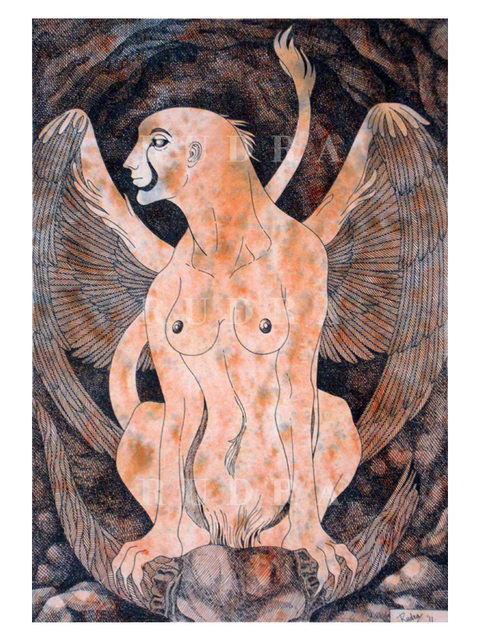 Were the student to obtain an insight into these higher worlds without sufficient preparation regarding their nature, he would find himself confronted by the picture of his own soul as though by an enigma. There his own desires and passions confront him in animal or, more seldom, in human forms. It is true that the animal forms of this world are never quite similar to those of the physical world, yet they possess a remote resemblance. Inexpert observers often take them to be identical.
Were the student to obtain an insight into these higher worlds without sufficient preparation regarding their nature, he would find himself confronted by the picture of his own soul as though by an enigma. There his own desires and passions confront him in animal or, more seldom, in human forms. It is true that the animal forms of this world are never quite similar to those of the physical world, yet they possess a remote resemblance. Inexpert observers often take them to be identical.
Now upon entering this world, an entirely new method of judgment must be acquired. For apart from the fact that things actually pertaining to inner nature appear as outer world, they also hear the character of mirrored reflections of what they really are. When, for instance, a number is perceived, it must be reversed, as a picture in a mirror; 265 would mean here in reality 562. A sphere is perceived as though from its centre. This inner perception must then be translated.
The qualities of the soul appear likewise as in a mirror. A wish directed towards an outer object appears as a form moving towards the person wishing.
Passions residing in the lower part of human nature can assume animal forms or similar shapes, that hurl themselves against the individual. In reality, these passions are struggling outward; they seek satisfaction in the outer world, but this search in an outward direction appears in the mirrored reflection as an attack on the individual from whom they proceed.
If the student, before attaining insight into higher worlds, has learnt by quiet and sincere self-observation to realize the qualities and defects of his own character, he will then, at the moment when his own inner self confronts him as a mirrored image, find strength and courage to conduct himself in the right way.
People who have failed to test themselves in this way, and are insufficiently acquainted with their own inner self, will not recognize themselves in their own mirrored image, and will mistake it for a reality foreign to themselves. Or they may become alarmed at the vision, and, because they cannot endure the sight, deceive themselves into believing the whole thing is nothing but an illusion which cannot lead them anywhere. In either case the person in question, through prematurely attaining a certain stage of inner development, would himself fatally obstruct his own progress.
The Two Petalled Lotus – The Third Eye 

The 2-petalled Lotus
This is the moment when the 2-petalled lotus in the region of the eyes is required. If it now begins to stir, the student finds it possible to set his higher Ego in connection with higher spiritual beings. The currents from this lotus flower flow towards the higher entities in such a way that the movements in question are fully apparent to the individual.
Just as the light renders the physical objects visible, so, too, these currents disclose spiritual beings of higher worlds.
Through inward application to the fundamental truths derived from Spiritual Science, the student learns to set in motion, and then to direct the currents proceeding from the lotus flower between the eyes.
The Higher ‘I’
It is at this stage of development especially that the value of sound judgment, and a training in clear and logical thought, is proved. The higher self which hitherto slumbered unconsciously, in an embryonic state, is now born into conscious existence. This is not a figurative, but a positive birth in the spiritual world, and the being now born, the higher self, if it is to be capable of life, must enter that world with all the necessary organs and aptitudes. Just as Nature must provide for a child being born into the world with suitable eyes and ears, so, too, the laws of self-development must provide for the necessary qualities, with which the higher self can enter existence.
These laws governing the development of the higher spiritual organs are none other than the laws of sound reason and morality of the physical world. The spiritual self matures in the physical self as a child in the mother’s womb. The constitution of the spiritual self is similarly conditioned by the laws of common intelligence and reason that govern physical life. No one can give birth to a soundly constituted higher self, whose life in thought and feeling, in the physical world, is not sound and healthy.
Natural, rational life is the basis of all genuine spiritual development. Just as the child when still in the maternal womb, lives in accordance with natural forces to which it has access, after its birth, through its organs of sense, so, too, the human higher self lives in accordance with the laws of the spiritual world, even during physical existence. And even as the child, out of a dim life-instinct, acquires the requisite forces, so, too, can man acquire the powers of the spiritual world before his higher self is born. Indeed he must do this if the latter is to enter the world as a fully developed being. It would be quite wrong for anyone to say: ‘I cannot accept the teachings of Spiritual Science until I myself become a seer,’ for without inward application to the results of spiritual investigation, there is no chance whatever of attaining genuine higher knowledge. It would be as though a child, during gestation, were to refuse the forces coming to it through its mother, and proposed to wait until it could create them for itself. Just as the child in its incipient feeling for life, learns to appreciate what is offered to it, so can the non-seer appreciate the truth of the teachings of Spiritual Science.
An insight into these teachings, based on a deeply rooted feeling for truth, and a clear, sound, all-round critical and reasoning faculty, is possible, even before spiritual things are actually perceived. The esoteric knowledge must first be studied, so that this study becomes a preparation for clairvoyance. A person attaining clairvoyance without such preparation would resemble a child born with eyes and ears but without a brain. The entire world of sound and colour would display itself before him, but he would be helpless in it.
- At this stage of his esoteric development, the student realizes, through personal inward experience, all that had previously appealed to his sense of truth, to his intellect and reason.
- He has now direct knowledge of his higher self.
- He learns how his higher self is connected with exalted spiritual beings, and forms with them a united whole.
- He sees how the lower self originates in a higher world, and it is revealed to him how his higher nature outlasts his lower.
- He can now distinguish the imperishable in himself from the perishable; that is, he learns, through personal insight, to understand the doctrine of the incarnation of the higher self in the lower.
- It will become plain to him that he is involved in a great spiritual complex, and that his qualities and destiny are due to this connection.
- He learns to recognize the law of his life, his Karma.
- He realizes that his lower self, constituting his present existence, is only one of the forms which his higher being can adopt.
- He discerns the possibility of working down from his higher self on to his lower self, so that he may perfect himself ever more and more.
- Now, too, he can rightly distinguish the great differences between human beings, in regard to their level of perfection.
- He becomes aware that there are others above him, who have already traversed the stages which still lie before him, and he realizes that the teachings and deeds of such men proceed from the inspiration of a higher world. He owes this knowledge to his first glimpse into this higher world. The so-called great Initiates of humanity now become vested with reality for him.
These, then, are the gifts which the student owes to his development at this stage: insight into his higher self; insight into the doctrine of the incarnation of this higher being into a lower; insight into the laws by which life in the physical world is regulated according to its spiritual connections, that is, the law of Karma; and finally, insight into the existence of the great Initiates.
From Belief to Knowledge
Thus it is said of a student who has reached this stage, that all doubt has vanished from him. His former faith, based on reason and sound thought, is now replaced by knowledge and insight which nothing can undermine. The various religious cults have presented, in their ceremonies, sacraments, and rites, externally visible pictures of the higher spiritual beings and events. None but those who have not penetrated to the depths of the great religious cults, can fail to recognize this fact. Personal insight into spiritual reality explains the great significance of these externally visible cults. Religious service, then, becomes for the seer an image of his own communion with the higher, spiritual world.
It has been shown how the student, by attaining this stage, becomes, in truth, a new being. He can now mature to still higher faculties, and, by means of the life-currents of his etheric body, control the higher and actual life-element, thus attaining independence, to a high degree, from the restrictions of the physical body.
There is more on the etheric body here: The Three Spiritual Principles of the Universe
On Alcohol, Meat and physical exercises
From From the Contents of Esoteric Classes
Although one can’t eat one’s way into the spiritual world, eating the wrong things can make spiritual development difficult or impossible.
Alcohol only arose after the Atlantean epoch to help men to become individualized. It closes man off from his higher capacities and encloses him in himself. That’s why alcohol was used in the Dionysian mysteries. But now all civilized people have reached that stage so that alcohol is an unnecessary evil today.
Through its use one loses the ability to get along with others and to understand them. Alcohol is especially harmful for esoterics since its use changes all developed higher forces into forces of the personal ego, repeatedly locks it into itself, and tears the astral body apart through the opposing streams of the higher and lower I forces. The principle through which everyone can consciously attain his individualization was brought through the coming of Christ to the earth. That’s why Christ Jesus says: I am the true vine.
By consuming alcohol one prepares a fertile soil for hosts of spiritual beings, just as a dirty room gets filled with flies.
The meat (but not milk and eggs) that we eat is permeated by the animal’s astral body, and so our astral body has to work to digest it. This takes it away from its real task of creating pictures. Also at night it’s held fast by the etheric body so that it can’t leave it properly. This hinders it from its nightly task of restoring vital forces.
Vegetarian food that consists of physical and etheric things support the creation of large, comprehensive pictures and so gives a greater insight that lets one oversee things better without much deliberation. The greater force doesn’t exhaust us, but summons spiritual forces.
Vegetarian food is excellent for doctors and lawyers who will find it easier to see through their patients or their clients’ affairs, but it’s not the right thing for bankers, industrialists, salesmen and others who have a lot of calculating, for one loses the ability to make physical combinations.
People who inherited a body that can’t stand vegetarianism should not undertake an esoteric training.
The jogging, exercising and bathing that are often recommended are wrong for an esoteric; they pull him down into his physical body. He should try to move his limbs as little as possible.
Creation of the Sun System and the Zodiac
Posted by Kim Graae Munch in Astrology, Esoterics, Indian esoteric on January 25, 2012
The World Egg is the most universal symbol we have, and the Zodiac is the most developed form of it, but we find it everywhere in all cultures, we just don’t recognize it as representing the world egg.
See also this album: The World Egg and the Zodiac
We can find the history of the zodiac in the four heavenly beasts, Eagle, Lion, Ox and Man; they were the first members of the Zodiac, first later came the Cardinal signs, and later again the mutable, they came when man began developing these qualities, just as the outher planets first became visible when they became influential.
Amma created the egg, what became our sun system, not the whole universe. Within his egg, Amma began spinning around, forming the po seed. The po is the smallest invisible seed at the center.

Amma then placed seven ‘words’ [Planets] in the po, which began to vibrate strongly within the seed. The spiraling vibrations caused four clavicles to grow forth from the po.

These were the four heavenly beasts, the fixed star signs. These four powers were the main factors in developing the sentient soul, Eros of Plato, or Tamas of Hinduism.
These four Androgyne beings split into four male and four female, so we now had the cardinal and fixed star signs. The cardinal powers were necessary for developing the intellectual soul, or Logos of Plato, or Rajas of Hinduism.
The Dogon call these beings the Nommo Anagonno, ‘The Word (Nommo) that Became Fish-Man’ (Anagonno). The male and females got a son, and the mutable star signs was created. The mutable signs were necessary for developing the conscious soul, Thumos of Plato, or Sattva of Hinduism.
The Nommo entered the world through the place on the sky where Sirius is placed. They were the teachers of mankind, the Angels. They are also associated with the moon.
This Zodiac are fields going from the circumference around the sun system into the system, not just radiation, and not from the large universe, this is called the Tropical Zodiac.
 Tropical Zodiac
Tropical Zodiac
The Egg, the Zodiac are spiraling through the universe so it’s changing position in relation to the stars, but the fields are constant in relation to the Sun system, to the vernal equinox:
 Sun-system passing through the universe
Sun-system passing through the universe
It can also be seen in this fashion:
 Sun system through the universe
Sun system through the universe
Man is created in the likeness of God, here in embryonic form, folding itself out from the circular form:
 Man Embryonic form
Man Embryonic form
We are not a copy of the whole universe, we are a copy of our own sun system, not including far sun systems.

Auric form of man:
 The Auric Egg
The Auric Egg
Lucifer gives visions. One has to break through them, otherwise one doesn’t break through the shell that’s around every man and covers the real spiritual world. Visions and voices are around us like the shell around a chick. One might see an angel in a vision and when one presses through the vision the angel will change into a snake, Lucifer’s symbol, for at the Temptation he appeared as a snake. Or one might see the colour blue in one’s meditation — if one breaks through it the blue can become red, and then it turns out that we saw our own passions. As a result of his temptation by Lucifer man doesn’t have everything that the Gods have; he received knowledge, but not life. Thereby everything that we know and perceive is permeated by Lucifer and Ahriman. … An ordinary man is like the chick that would consider its shell to be the real world. If the chick could see, it would see the egg’s contents as if it were the whole world. Likewise we see our eggshell or aura spread out around us as the blue dome of the heavens. If we break through our shell the sun and moon become darkened, the stars fall down onto the earth and the spiritual world spreads out in its place.
A man lives in his eggshell — his aura. The Elohim gave us our aura, and through the fall into sin it has become like a shell around us, and we’re in it like a chick in an egg. The stars in the heavens are our boundary and we must break through it with our soul force, just as a chick must break out of its shell through its own power. Then we get into a new world, just as a chick has a new world before it when it has crept out of the egg. And since men all have the same eggshell around them an astronomy could arise that lets the heavenly bodies move along the celestial dome. The egg shell is the Ex Deo nascimur. To break through it and to bring something with us into the spiritual world we must bring what penetrates the shell from the outer spiritual world and that’s common to all; and that’s the Christ. That’s why we say: In Christo morimur and hope that when we’ve broken through the shell we will be awakened again: Per Spiritum Sanctum reviviscimus. Esoteric Lessons Part III
Formed as the world egg:
 Mithras
Mithras
Wael Al-Mahdi have made an analysis of the fight between Mittras and the bull, which have it’s like in the Gilgamesh epic. Today we have our mental focus in the Ego, the Intellectual soul or left brain hemisphere, but then our mental focus was in what we today call our subconsciousness, the Sentient soul or Limbic brain. This fight describes the change of focus from the sentient soul to our current ego, but it’s an ongoing fight between our ego and the subconsciousness, or rather it’s a fight between our superconsciousness and subconscioussness and the battleground is the ego. Wael Al-Mahdi writes that Mithras is the devine ego, but I see him as the ego, the lower I, where I see his father, the mighty Sol Invictus, as the higher I.
Let us now take a look at the symbolism of the Mithraic mysteries and try to make some sense of them. Mithras himself, in the manner of all epoch-making developments of the unconscious, appears suddenly and unexpectedly, from a rock. Here Mithras takes on the role of the divine ego – the ego of the average man transfigured and lifted up by energy from the unconscious harnessed through myth and ritual. In this Mithras is strong, solid, rocklike. The divine ego and the everyday ego (the one that worries about food, shelter, money etc) are not identical; the divine ego, despite its disctinctness but in keeping with unconscious manifestations, is foreign, in this instance, of exotic Persian origin. To symbolize freedom from the unconscious as enemy, and also the actual emancipation of freedman Mithraists, Mithras dons a Phrygian cap, the so-called liberty cap. With the rise of Mithras, miracles are performed, as he strikes a solid rock with the thunder of consciousness and live-giving water spouts from the rock. Here the dead and inanimate can produce life, just as a psychological impasse can give rise to a new lease on life; the Qur’an states of God, “He brings the living out of the dead, and the dead of the living.”
The central and most striking image of Mithraism is the tauroctony – the slaying of the bull. This supreme act of defiance, even hybris, is depicted on subterranean murals in Mithraea from Britain to Rome to Syria. The bull in his power and animal intransigence is the unconscious as enemy. He is the personification, or rather theriomorphization, of all the alien powers that ailed the forward looking man of action. He is the heaviness of the heart at dawn, he is the tightness of the chest before a dangerous act. He gives rise to the autonomous moods of self-doubt and self-loathing. He is boredom, lack of meaning, existential ennui. He represents every social disappointment, lack of control, failure to follow custom, and most dangerously, lack of adaptation. The evil father, father as a depressant, is in the bull – as is the evil friend, the devil, who both attacks the ego and forces to do evil. Every worthless feeling of the ego is projected onto him – and he is indeed a fitting target of projection. In short, he is the great No to life. He is the enemy within that must be vanquished if the conscious ego is to grow.
In contrast to conciliation myths, in which the ego tries to make peace with the unconscious, here the ego strikes with its readiest weapon – its will. After a long chase and a difficult haul to the womb-cave where a transformation can occur, Mithras’ right hand performs the unspeakable act of stabbing the bull’s neck. The cave serves a dual purpose are both regenerative womb and the unconscious cosmos which parallels the real cosmos. But there is respect in Mithras – out of respect, he pulls the animal back by the nostrils, never by the horn. Mithras’ face is serene, almost sublime – divinely devoid of emotion, Zen in his imperturbability – looking up towards his father, the mighty Sol Invictus, the Invincible Sun, as if saying, “Behold my most brazen act, father. Soon we are to become equals” Mithras is steadfast, unflinching – he takes full responsibility for his act, he never hesitates or backs down. As a result of Mithras’ challenging of the evil-animal father archetype, Father Sun emerges in a more human guise but with his divinity still intact.
In some reliefs the sacred bull bleeds wheat or grapes, symbolizing the paradox of the ability of the unconscious, even at is most evil, to heal after it harms. The killing of the bull is not a real-world death but an unconscious event that breathes life into a new psychological energy and outlook. But Mithras, this self-overcoming hero, is not alone in his daring act. Like all good heroes he has his sidekicks, the torchbearers, Cautes with his torch pointing up and Cautopates with his torch pointing down. They are his awareness of opposites, his ability to make distinctions, to discern opposites, and in their astral aspect symbolize his heavenly outlook. There is his dog too, lapping up the bull’s blood – his discipline, self-control, honed intellect, and the vital ability of self-obedience. On the scene is a serpent of wisdom and shrewdness, also drinking the life giving blood, for no quantum is wasted here. A sneaky scorpion sucks the ‘vim’ out of the bull’s genitals, literally ‘breaking his balls’ – energy that can be better utilized by the conscious hero Mithras. Mithraism and the Unconscious as Enemy
More on the Tropical vs. Sidereal Zodiac(Bruce Scofield):
We all know that this astrological system (Vedic) uses one or another version of the sidereal zodiac, the slight differences between them being measured by what is called the ayanamsha, the gap between the tropical and sidereal zodiac.
The twelve sidereal-based zodiacal signs (rasis) used in this system are not particularly important overall, and they serve more as a background reference plane for planets than as a matrix for personality distinctions.
The houses are important, however, but house boundaries between planets will remain roughly constant in a timed birth chart no matter which zodiac is employed. After reading a number of texts on the subject it became apparent to me that Hindu astrology was a tradition that was not concerned with extracting psychological insights from birth charts, it was more event-oriented.
and
In my opinion, Rudhyar remains the most important astrologer of the 20th century. He had something intelligent to say on just about every issue in astrology, including the sidereal-tropical problem.
Rudhyar wrote that the sidereal zodiac, the zodiac of constellations, was a product of the myth-making faculty of the human psyche. These constellations, groupings of stars, are a remnant of an earlier age that saw the rise of agriculture, but they are not relevant to modern life.
He felt it was unfortunate that both zodiacs use the same names for their 12-fold division of the yearly circle, and he regarded the tropical zodiac as being the proper framework on which to assess the evolution of mankind.
 Tropical Zodiac
Tropical Zodiac
Or
 The Sun orbiting the Earth equator defining signs of the Zodiac.
The Sun orbiting the Earth equator defining signs of the Zodiac.
Distance to the Stars of the Signs
The star signs are purely symbolic, giving name to the star signs because they were at the particular part of the zodiac when the twelve 30° degrees parts of the ecliptic was named.
The stars in the signs are nowhere near each other, they may even not exist anymore, they are placed long from each other in the far past of the universe.
History of Tropical Zodiac
The classical zodiac was introduced in the neo-Babylonian period (ca. 7th to 6th century BC). At the time, the precession of the equinoxes had not been discovered. Classical Hellenistic astrology consequently developed without consideration of the effects of precession.
The discovery of the precession of the equinoxes is attributed to Hipparchus, a Greek astronomer active in the later Hellenistic period (ca. 130 BCE).
Ptolemy, writing some 250 years after Hipparchus, was thus aware of the effects of precession. He opted for a definition of the zodiac based on the point of vernal equinox, i.e. the tropical system.
While Ptolemy noted that Ophiuchus is in contact with the ecliptic, he was aware that the twelve signs were just conventional names for 30 degrees segments (especially since the Aries sign had ceased to be in contact with the Aries constellation already in his time). Wikipedia
He connected the thirty degree segments to the time of year, with the traditional names given.
 Ophiuchus or Scorpio by Christian Borup
Ophiuchus or Scorpio by Christian Borup
The Zodiac with the old rulers:
It is as a round table with twelve seats, with the King and Queen sitting together as Leo and Cancer for Sun and Moon, with the ten other seats taken by the knights. From The Sons of Jacob and the Zodiac.
Comments
Po Tolo (Sirius B) the oldest of stars, it’s name means ‘deep beginning’. The Dogon consider Po Tolo the reservoir and source of all things in this realm, and the germ of creation for our Solar System. It ejected it’s essence out into creation, and the particles of it’s essence was ‘infinitely small’.
References
Reconciliation of the Tropical and Sidereal Zodiacs. Part III.
The Snake and the Heel in Mythos
Posted by Kim Graae Munch in Esoterics, Indian esoteric on February 4, 2010
The motif in the birth of Krishna, where his mothers brother wished to take his life, and his wounded feet as a result of his fight with the snake, are known in different myths, within the same time frame, for Zarathustra, Oedipus, Dan, and Isak. I am not making a deep interpretation, which Steiner does better than I, but I just want to emphasize the motif:
Hence the legend relates how the child Krishna, even at his birth, was surrounded by miracles, and that Kansa, the brother of his mother, wished to take the life of the child. In the uncle of the child Krishna we see the continuance of the old, and Krishna has to defend himself against him; for Krishna had to bring in the new, that which kills the third epoch and does away with the old conditions for the external evolution of mankind.
That was the twofold deed of Krishna, He acted as a world-historical hero, in that he crushed the head of the serpent of the old knowledge and compelled man to re-enter the physical body, in which alone the ego could be won as free and independent ego, whereas formerly all that made man an ego streamed in from outside.
I am wounded in the feet, but with my own body I tread under foot the head of the serpent,” that is to say, the serpent with its head ceases to be the instrument of thought. The physical body and especially the physical brain, kills the serpent, and the serpent revenges itself by taking away from one the feeling of belonging to the earth. It bites one in the heel.
![]()

There may also be a relation to Orpheus [Orphan] and Eurydice. Orpheus could charm animals by his music, as Zarathustra could charm the animals when people would kill him as child, and also Eurydice was bitten in the heel like Krishna. Both Zarathustra and Orpheus was killed at the Holy place of Apollo/Ahura Mazdao.
Poets like Simonides of Ceos said that, with his music and singing, he could charm birds, fish and wild beasts, coax the trees and rocks into dance.
While fleeing from Aristaeus (son of Apollo), Eurydice ran into a nest of snakes which bit her fatally on her heel.
He uses the word agurteuonta (αγυρτεύοντα), a term used by Sophocles in Oedipus Tyrannus to characterize Teiresias as a trickster with an excessive desire for possessions.
Zoroaster appears as “Sarastro” in Mozart’s opera Die Zauberflöte, which has been noted for its Masonic elements, where he represents moral order (cf. Asha) in opposition to the “Queen of the Night.“
Oedipus was set out in the wood to die, with his feet mutilated. He was found by shepherds after an attempt to get rid of him. Teiresias was a blind prophet, as in the story about Krishna. Oedipus goes through life with clubbed feet. Steiner relates the story of Oedipus and the Sphinx with Faust and the clubfooted Mephistopheles of Goethe (Steiner).
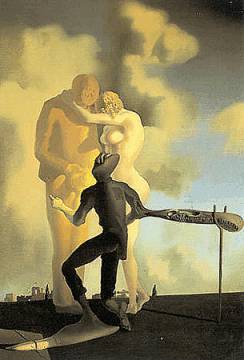
In Apocalypse of Moses chapter 26 states:
1 But he turned to the serpent [in great wrath] and said: “Since thou hast done this, and become a thankless vessel until thou hast deceived the innocent hearts, accursed art thou among all beasts.
2 Thou shalt be deprived of the victual of which thou didst eat and shalt feed on dust all the days of
3 thy life: on thy breast and thy belly shalt thou walk and be robbed of hands and feet. There shall not be left thee ear nor wing, nor one limb of all that with which thou didst ensnare them in
4 thy malice and causedst them to be cast out of paradise; and I will put enmity between thee and his seed: he shall bruise thy head and thou shalt bruise his heel until the day of Judgement.”
Jacob says the following words about his son Dan:
“Dan shall judge his people, as one of the tribes of Israel. Dan shall be a serpent by the way, an adder in the path, that biteth the horse heels, so that his rider shall fall backward. I have waited for thy salvation, O LORD.”
Literature
Wikipedia have a good reference article on the symbolism of serpents:

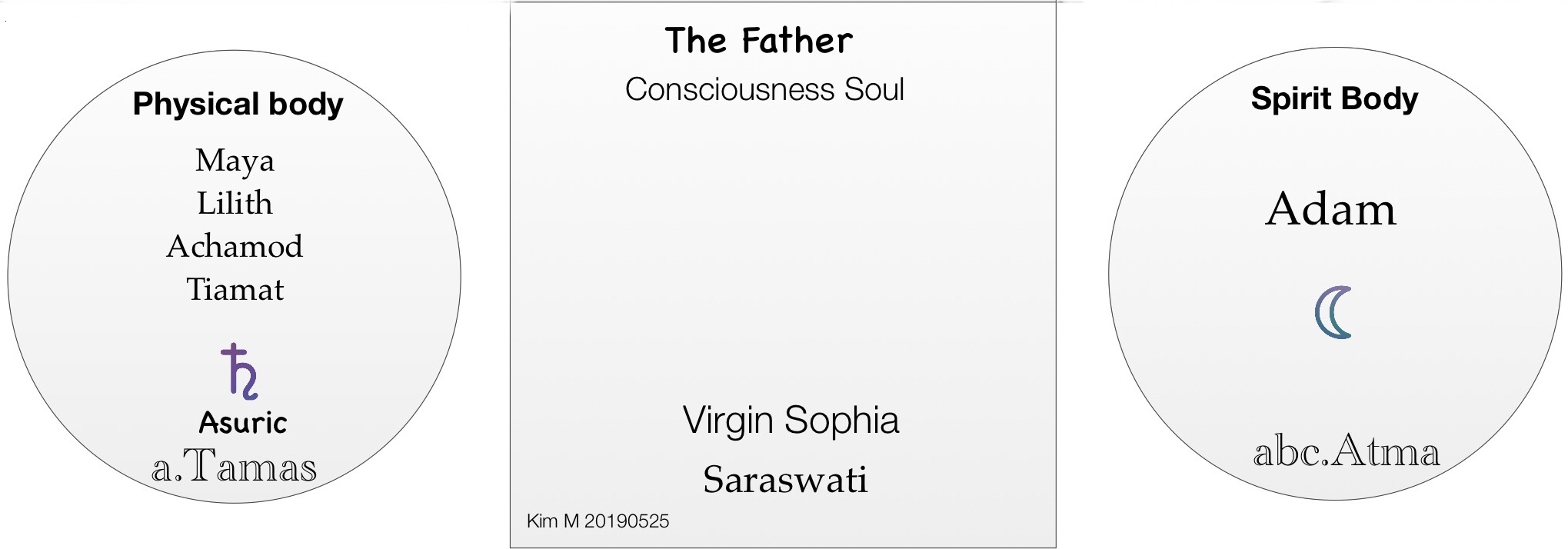








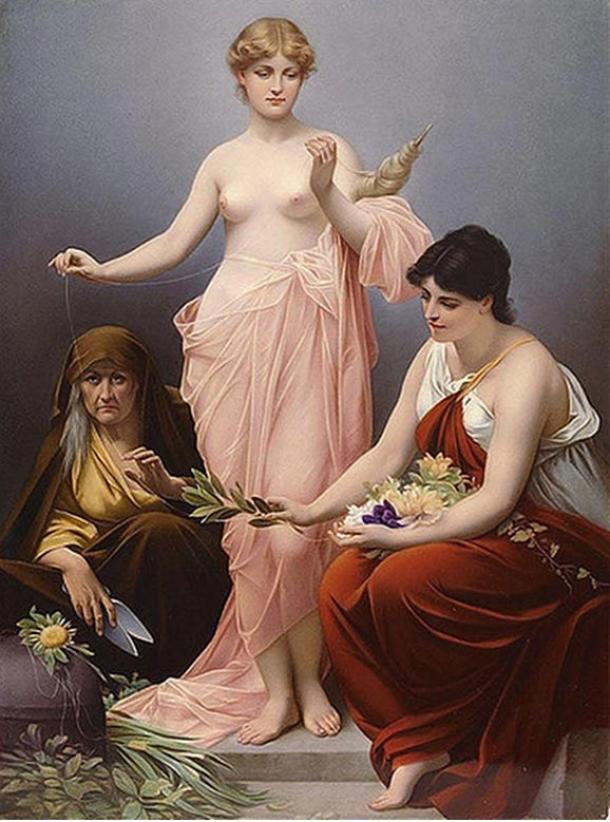









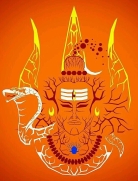











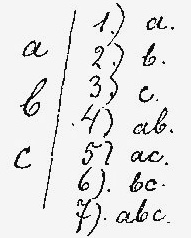











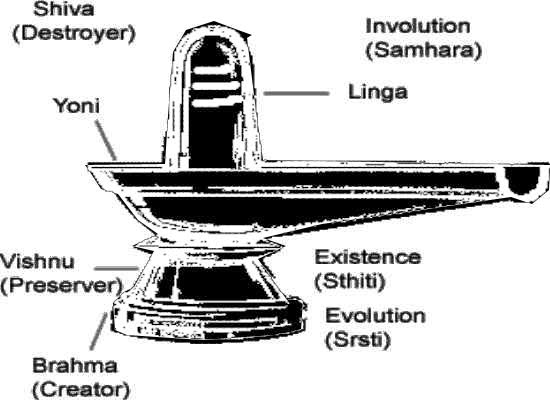

 Shiva forms a Tantric couple with
Shiva forms a Tantric couple with 
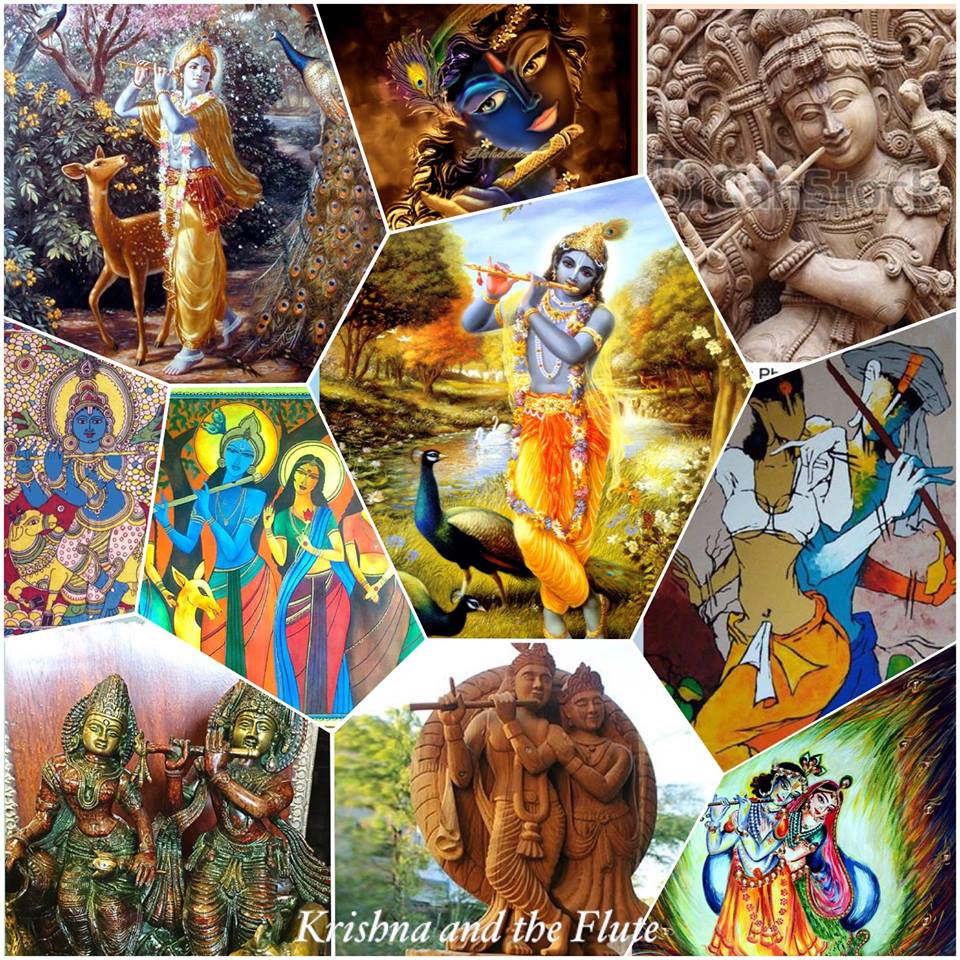

 The Orphic Egg
The Orphic Egg


 The serpents has two different colors like the two outer pillars in the Kabbalah Tree of Life, and they have the same interpretations as the Feminine and Masculine energies. Seven Lotus Flowers or Chakras, which are spiritual organs, are placed on the spine.
The serpents has two different colors like the two outer pillars in the Kabbalah Tree of Life, and they have the same interpretations as the Feminine and Masculine energies. Seven Lotus Flowers or Chakras, which are spiritual organs, are placed on the spine. Chakras in the Tree of Life
Chakras in the Tree of Life
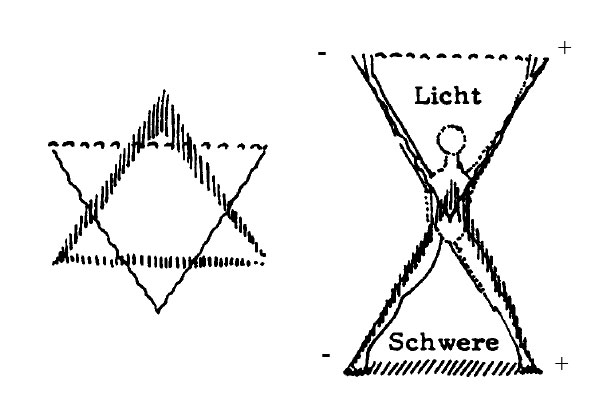 Microcosmic Man
Microcosmic Man




 Ketu and Rahu
Ketu and Rahu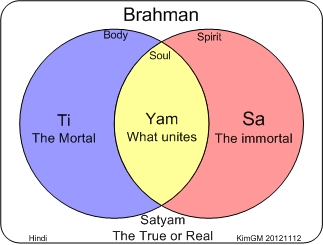
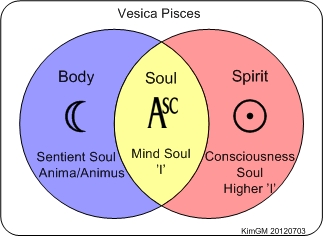



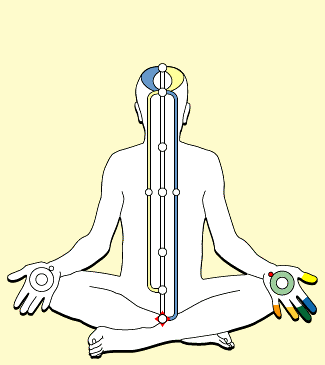


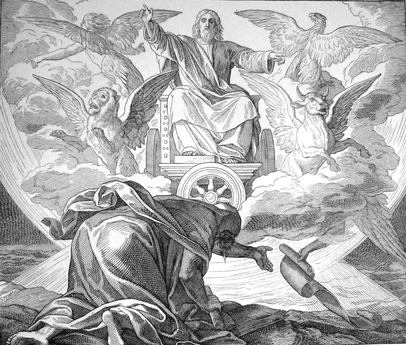

 Dambala and Aida Wedo – Tahiti
Dambala and Aida Wedo – Tahiti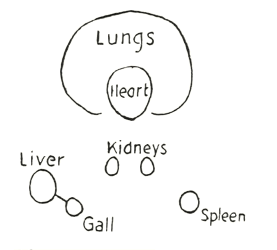
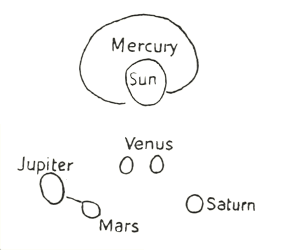
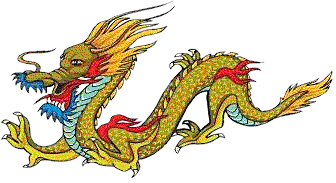
![kimgraaemunch [] GMail () com](https://kimgraaemunch.files.wordpress.com/2017/02/kimgraaemunch-g.png?w=210)












